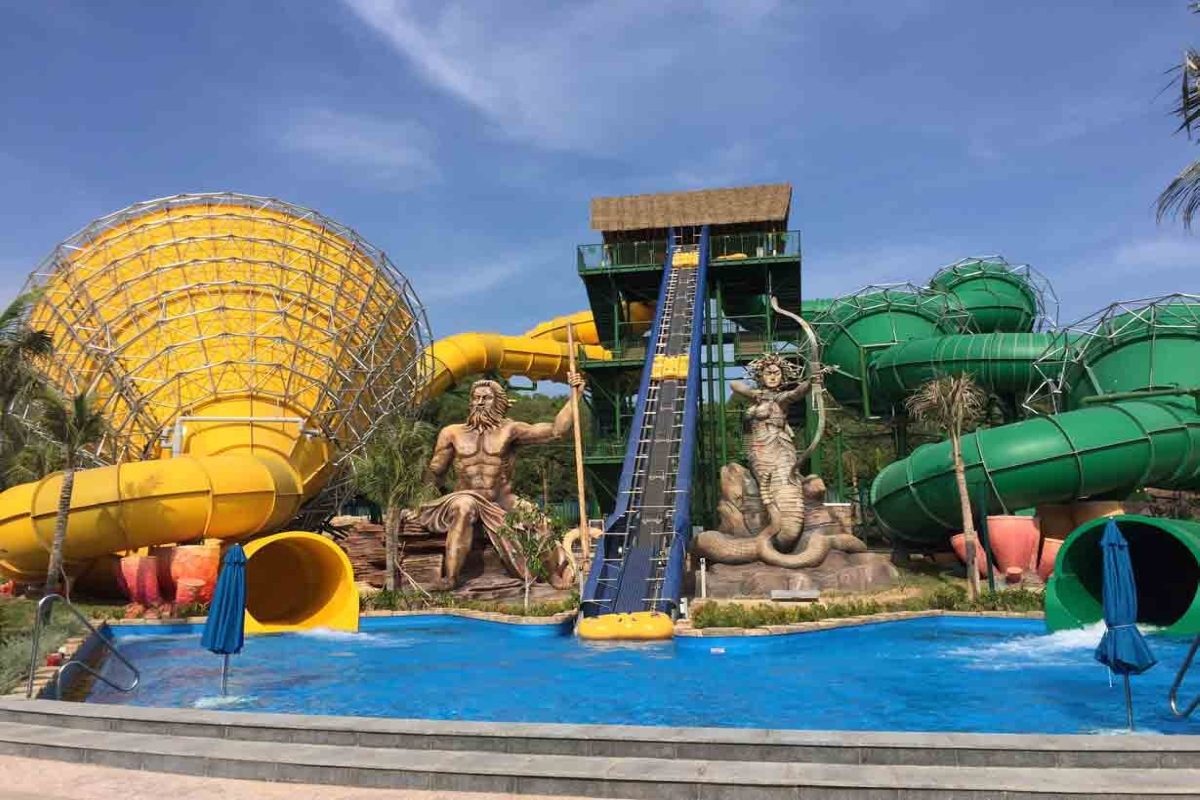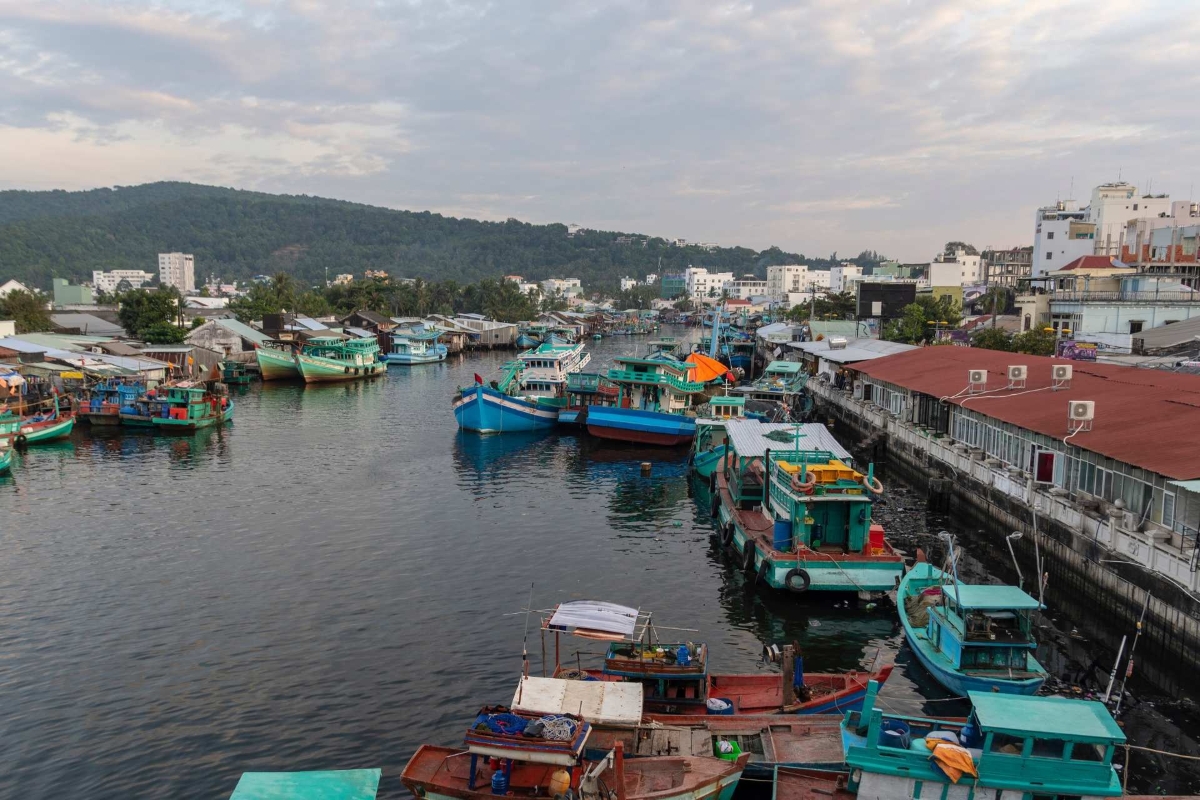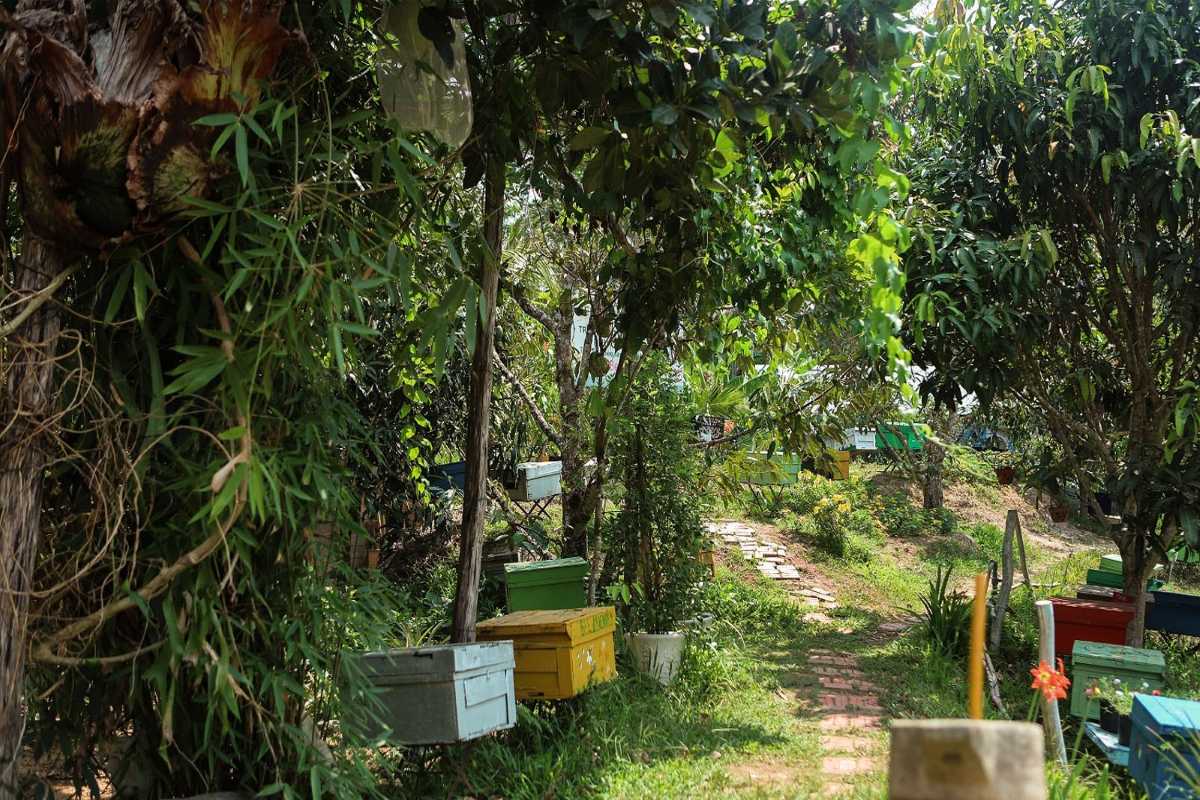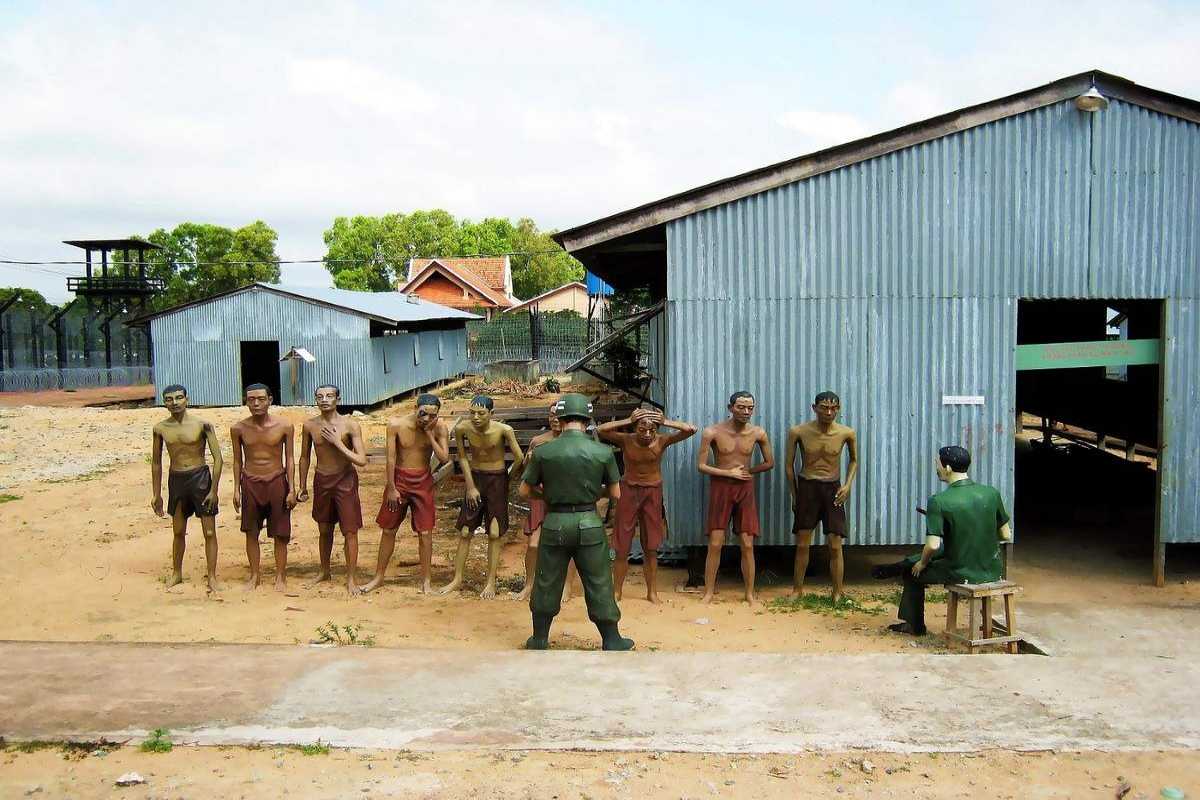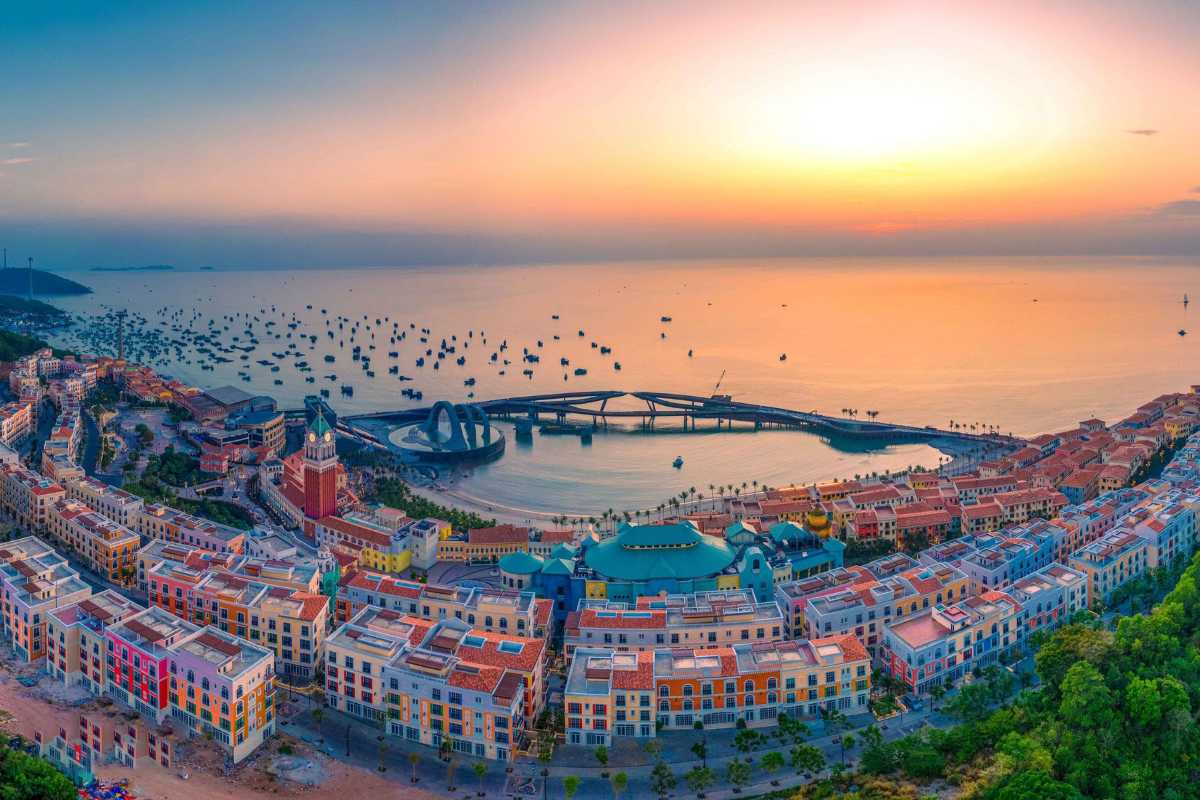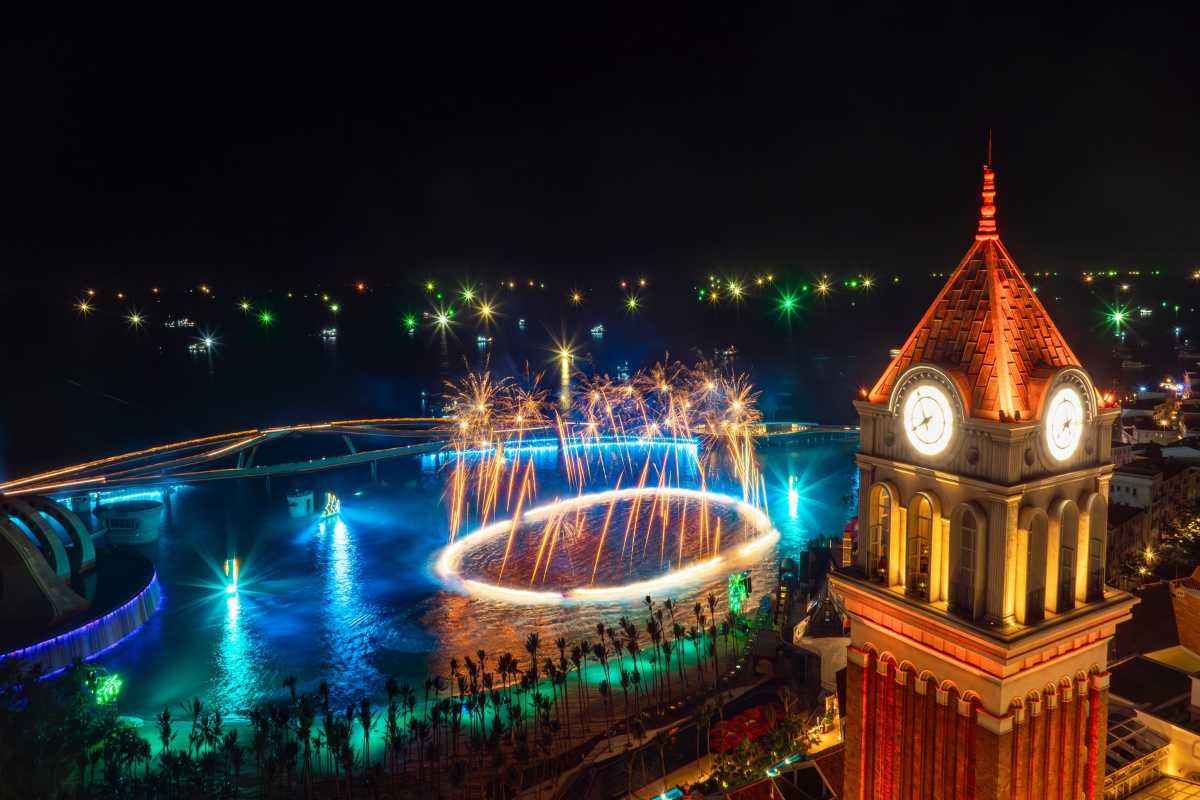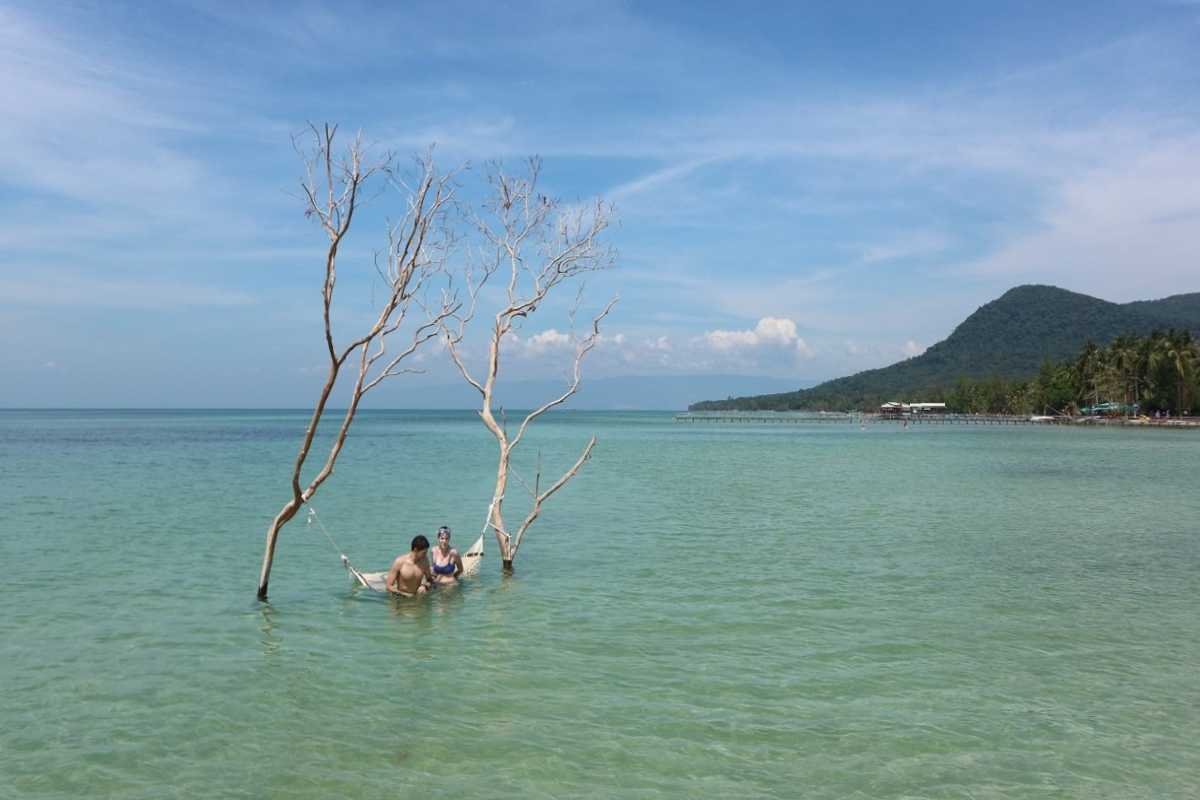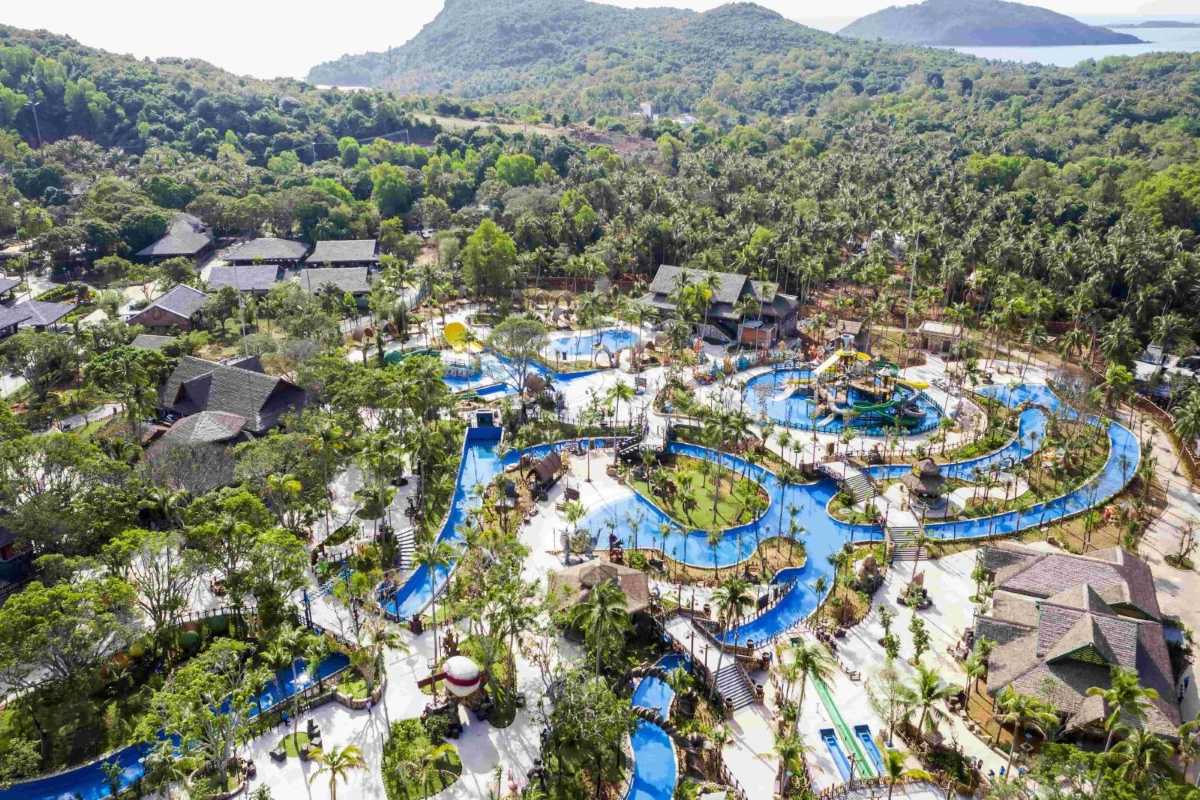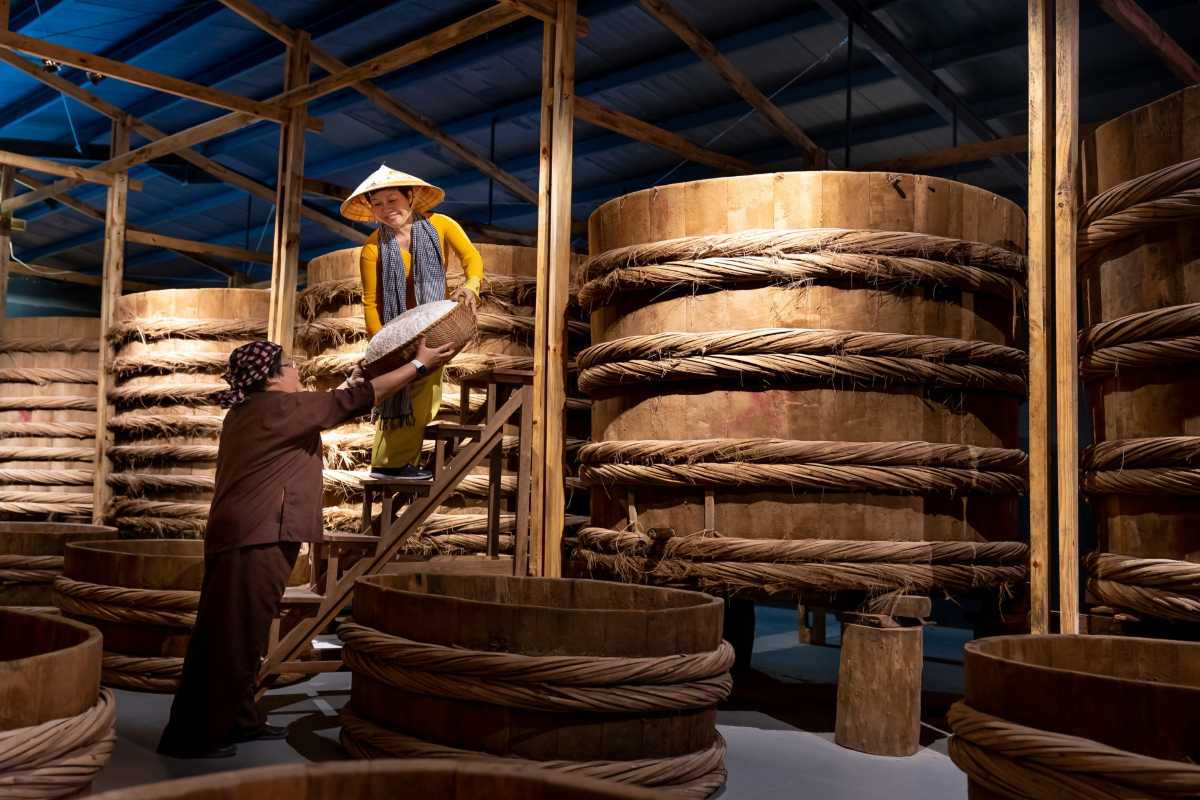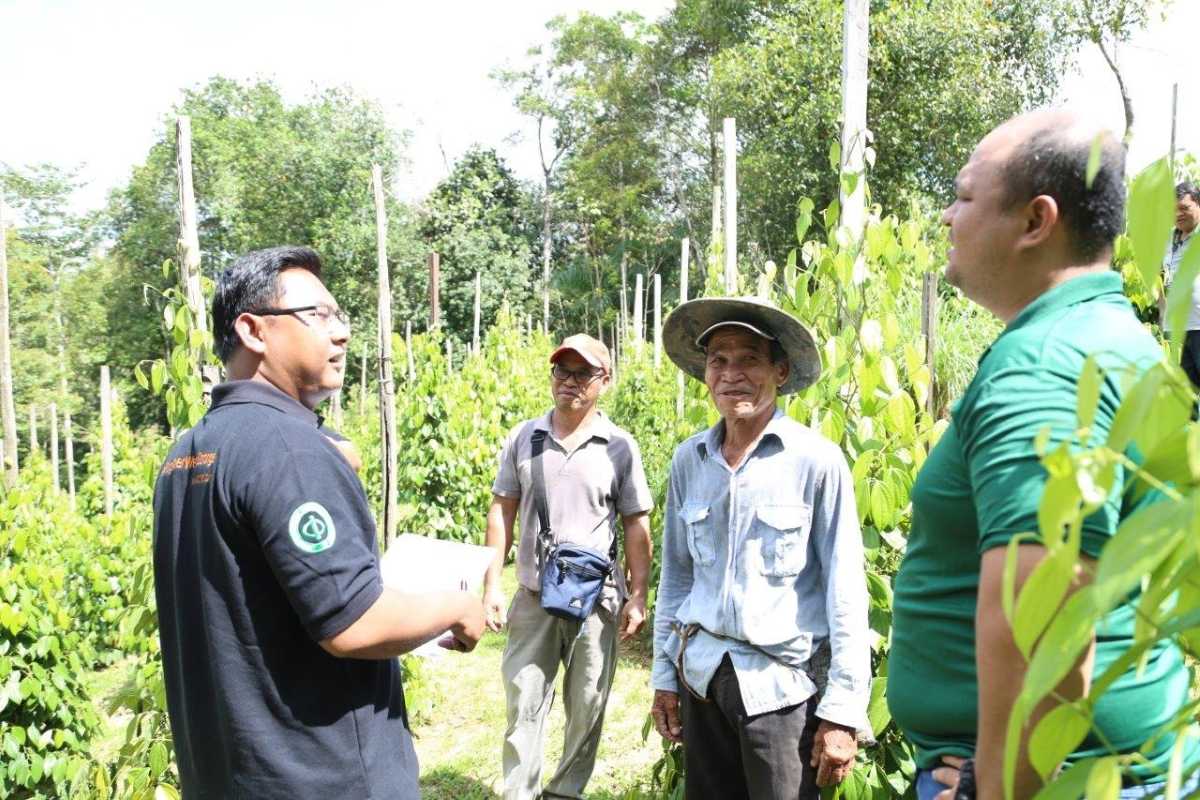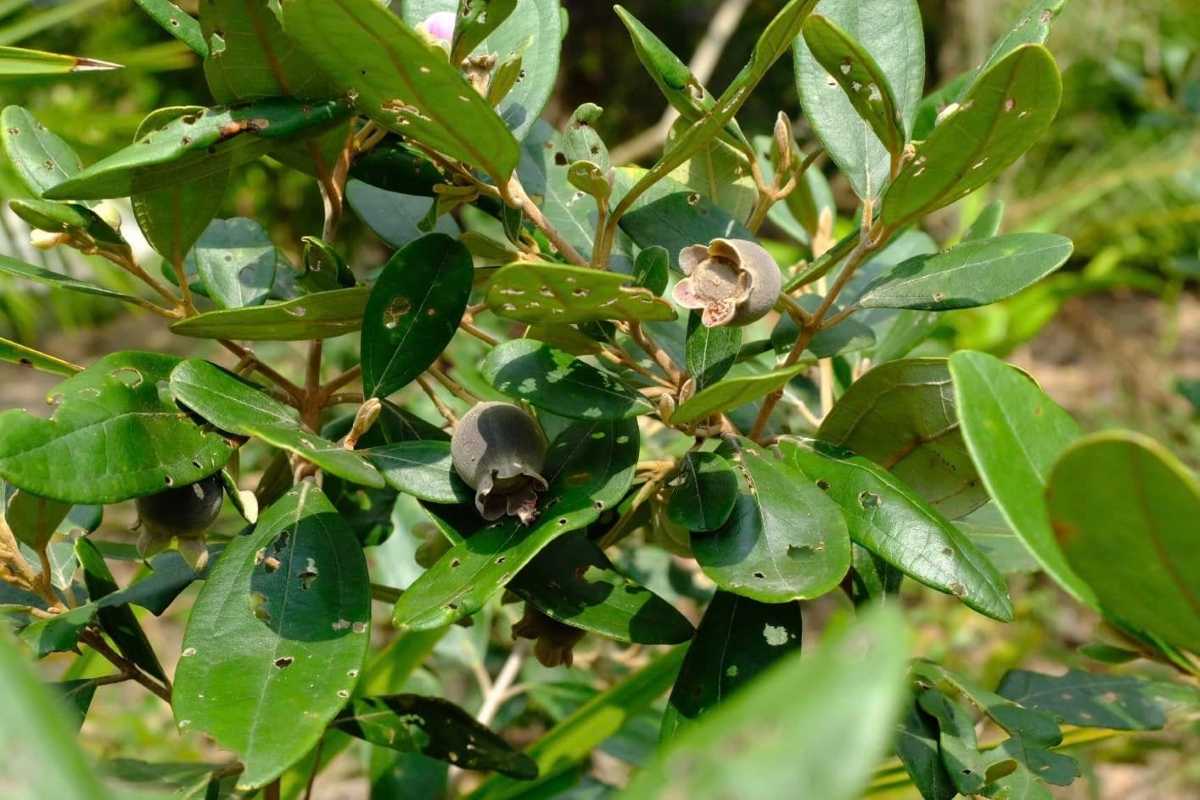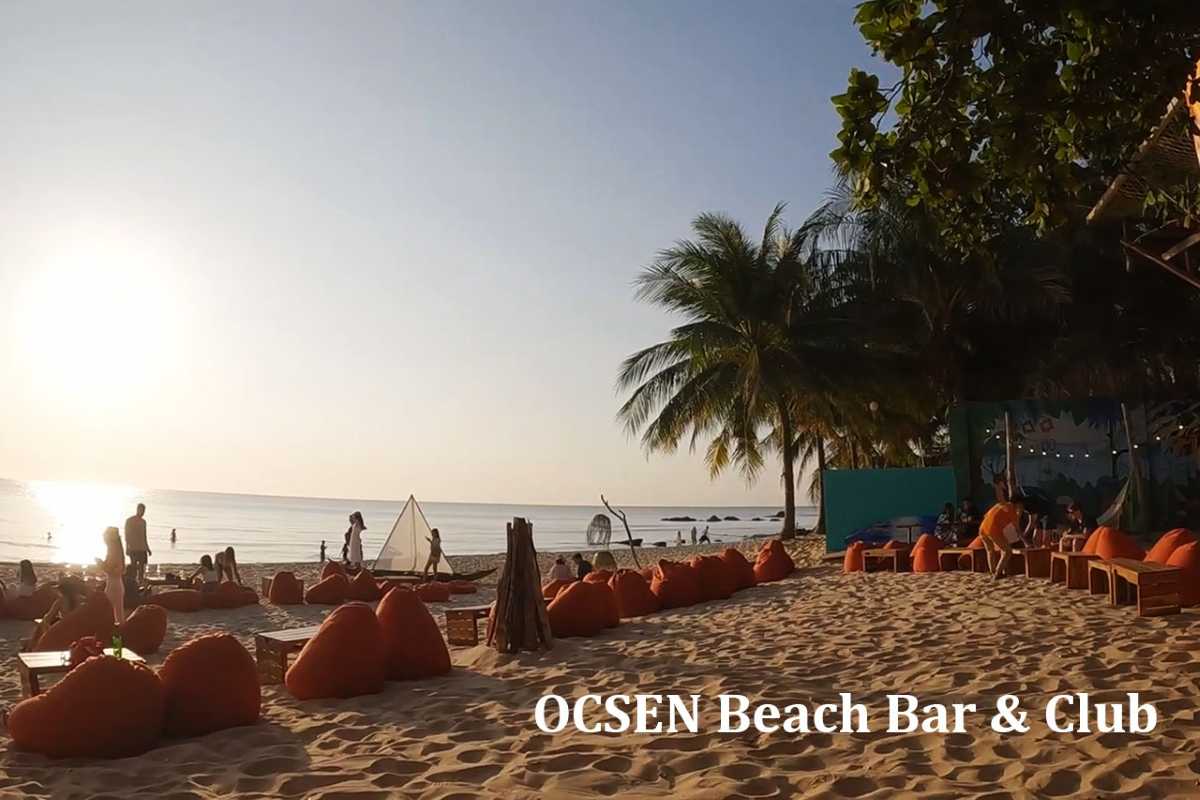Ho Quoc Pagoda Travel Guide: History, Culture & Things to Do in Phu Quoc
Ho Quoc Pagoda is a historic Buddhist temple on Phu Quoc Island that offers visitors a peaceful spiritual experience surrounded by stunning coastal views. Known for its beautiful architecture and the impressive Guanyin statue, it is a key cultural and religious landmark in Vietnam.
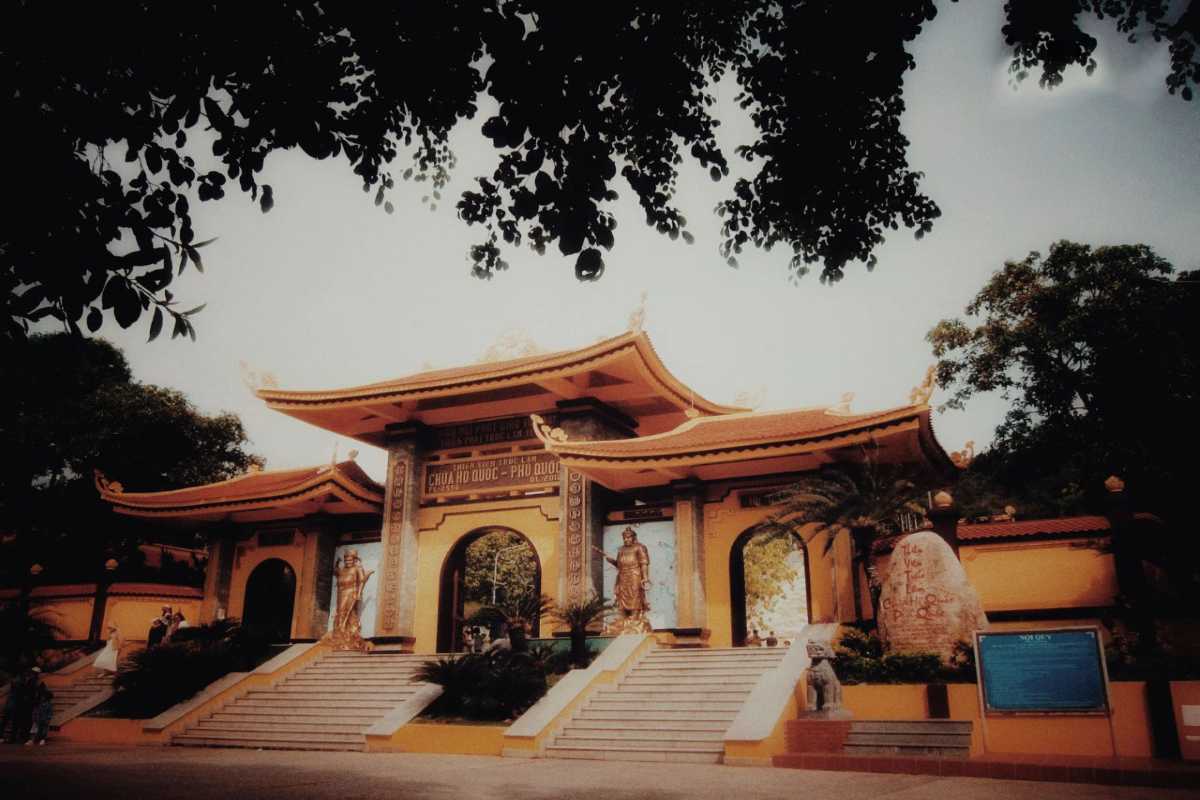
Introduction to Ho Quoc Pagoda
Ho Quoc Pagoda is a serene Buddhist temple located on Phu Quoc Island in Vietnam. This spiritual landmark is known for its stunning architecture and peaceful surroundings. As one of the island’s most significant cultural heritage sites, it offers visitors a glimpse into Vietnamese religious traditions and local artistry. Nestled amidst lush natural scenery, the pagoda stands as a prominent island attraction that invites reflection and exploration.
Plan your visit to Ho Quoc Pagoda to experience this unique blend of spirituality and beauty firsthand.
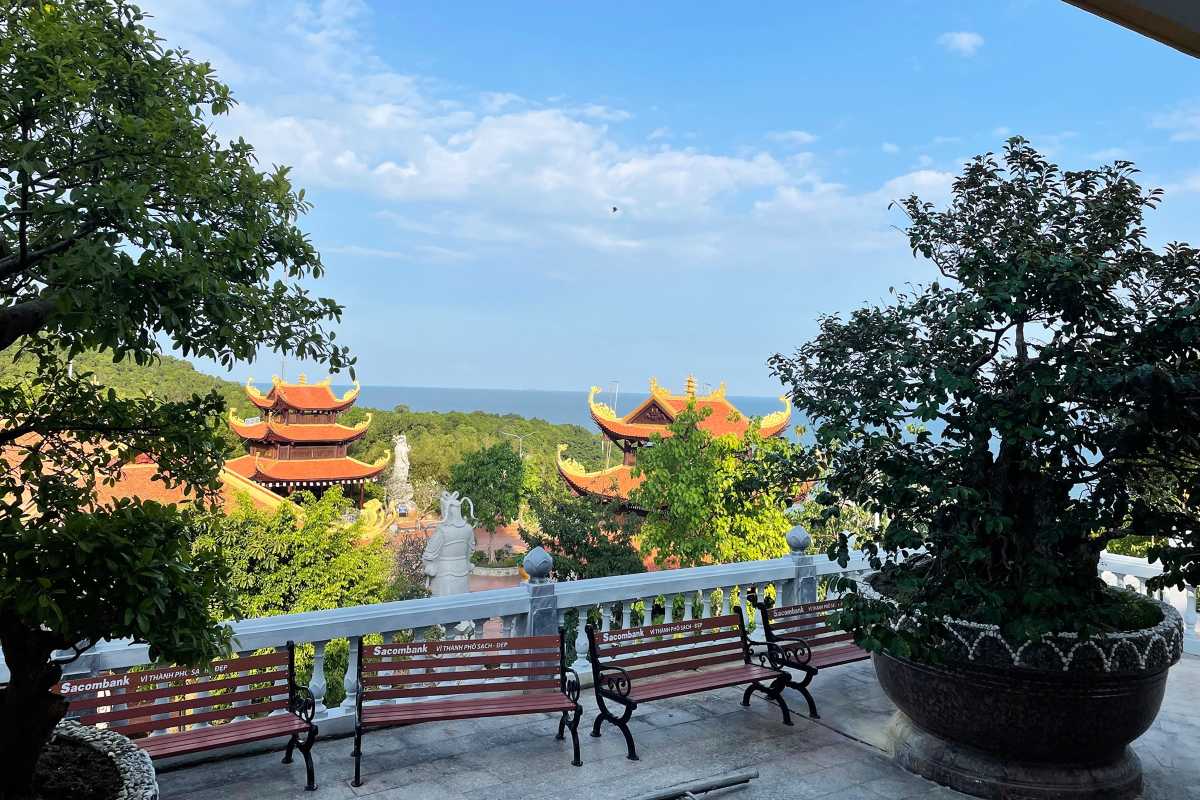
Overview of the Pagoda
The Ho Quoc Pagoda is a large, beautifully designed temple complex characterized by traditional Vietnamese pagoda architecture and spiritual symbolism. Visitors will find intricately carved statues, peaceful gardens, and panoramic views that enhance the spiritual atmosphere. The pagoda serves as both a place of worship and a cultural landmark, drawing tourists and locals alike who seek tranquility and connection to Buddhist temple heritage.
Discover the peaceful charm of Ho Quoc Pagoda and its welcoming environment that reflects the island’s rich religious history.
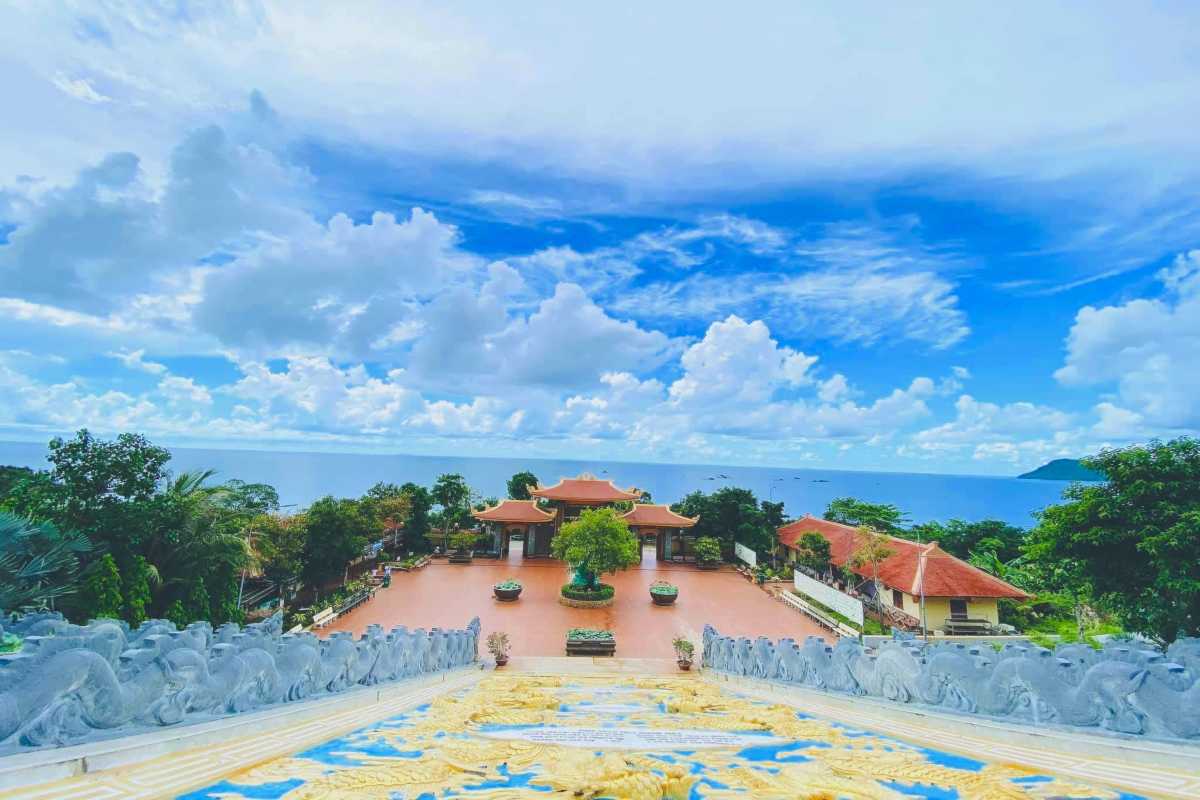
Significance of Ho Quoc Pagoda in Phu Quoc
The Ho Quoc Pagoda holds great cultural and spiritual significance for the people of Phu Quoc and visitors worldwide. It is a center for Buddhist culture and local religious practices, hosting important ceremonies and festivals throughout the year. The pagoda symbolizes the island’s commitment to heritage preservation and serves as a hub for community rituals that strengthen cultural identity. Visitors often find inspiration and peace in this sacred setting, which contributes to the growing spiritual tourism in Vietnam.
Embrace the deep cultural roots and spiritual essence of Ho Quoc Pagoda on your next trip to Phu Quoc.
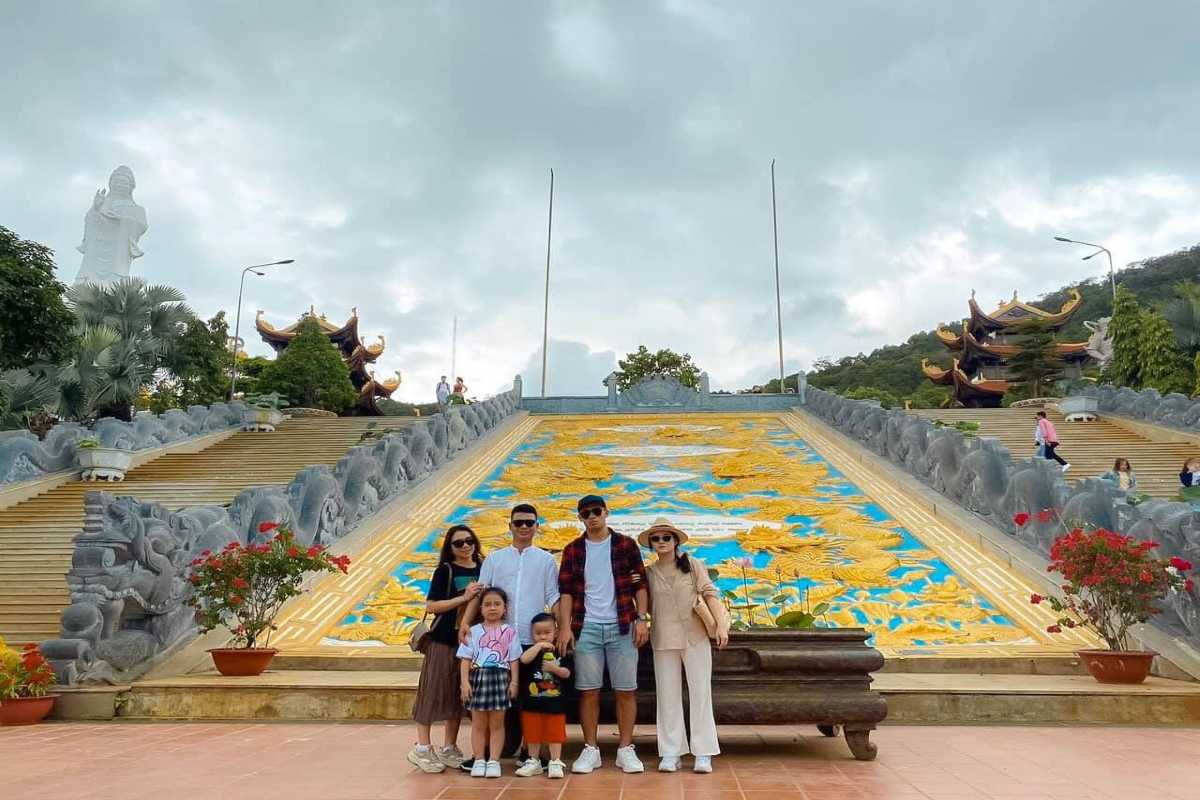
Location and Scenic Setting
Located in Ham Ninh Commune near Phu Quoc Town, Ho Quoc Pagoda offers visitors breathtaking views of the surrounding hillside and the Gulf of Thailand. The pagoda sits amidst lush tropical vegetation, providing a tranquil escape from the busy town life. Access to the site is straightforward, with various transport options available from the island’s center. Visitors can enjoy panoramic vistas and the peaceful rural landscape that enriches the spiritual experience at this coastal landmark.
Plan your journey with ease by understanding the location of Ho Quoc Pagoda and its scenic surroundings.
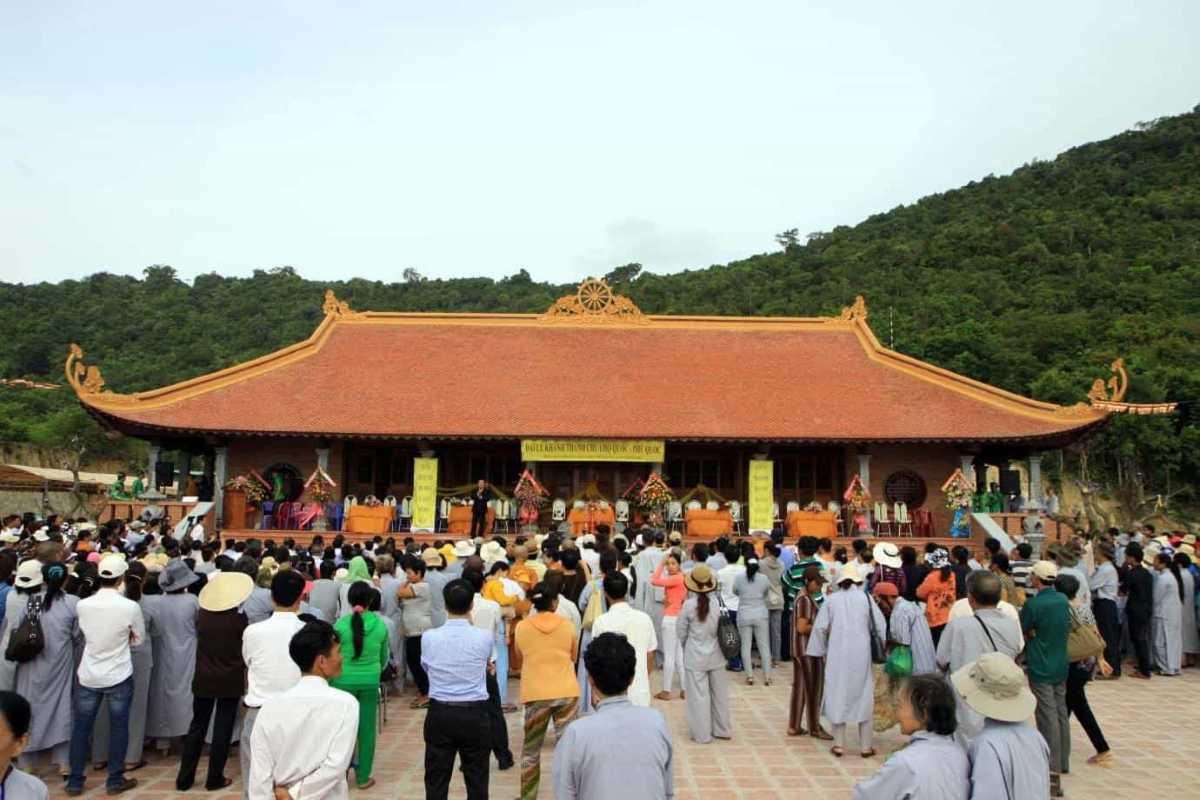
History of Ho Quoc Pagoda
Ho Quoc Pagoda’s history reflects a journey of devotion and cultural heritage on Phu Quoc Island, Vietnam. The construction began in the early 20th century, with multiple phases leading to its current majestic form. Over time, the pagoda has become a spiritual and architectural landmark, enriched by ceremonies and community involvement. Understanding its historical timeline helps appreciate the depth of its cultural significance.
Experience the rich history embedded in Ho Quoc Pagoda and witness its evolution as a treasured religious site.
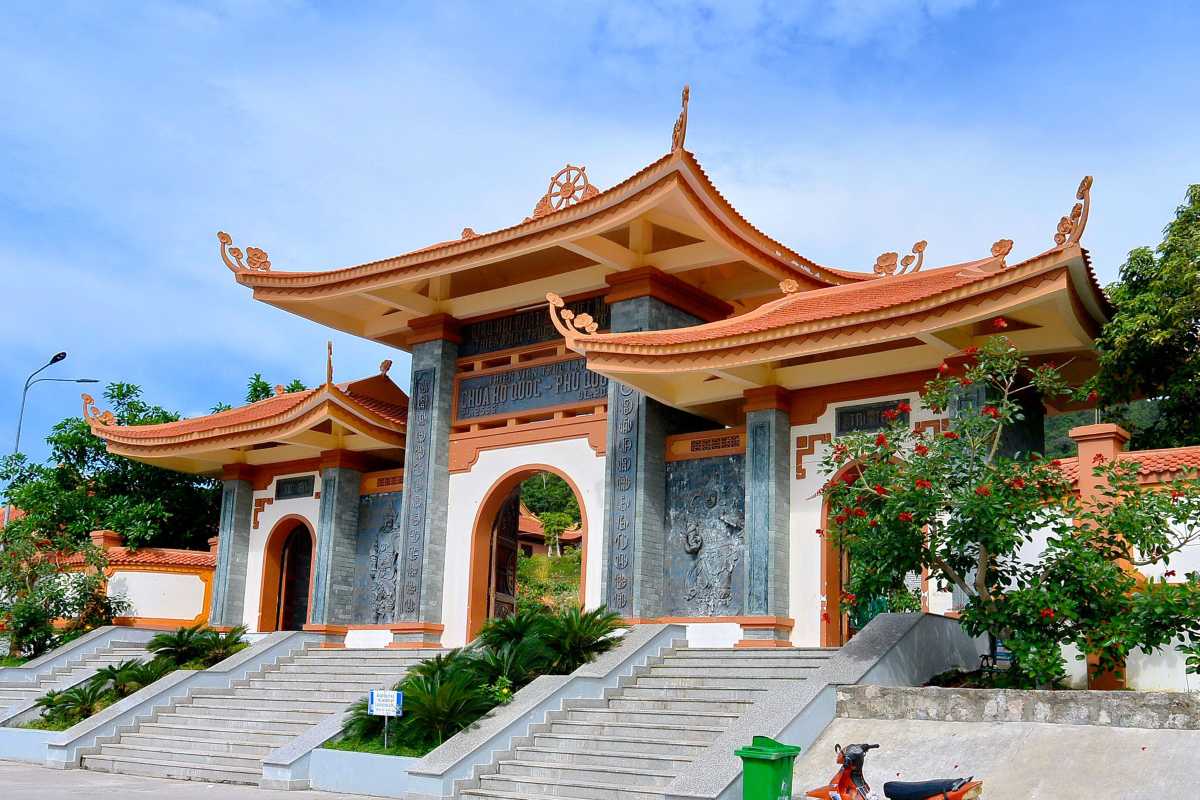
Construction and Development Timeline
The construction of Ho Quoc Pagoda started decades ago and progressed through several key milestones:
- Initial foundation laying and site selection reflecting spiritual and geographical considerations.
- Major building phases including the main temple, prayer halls, and statues.
- Consecration ceremonies marking the opening and dedication of the pagoda.
- Recent renovations and expansions to accommodate growing visitors and preserve heritage.
Each phase highlights architectural milestones and reflects the deep religious devotion of the local community.
Plan your visit with a deeper appreciation of the pagoda’s construction history.
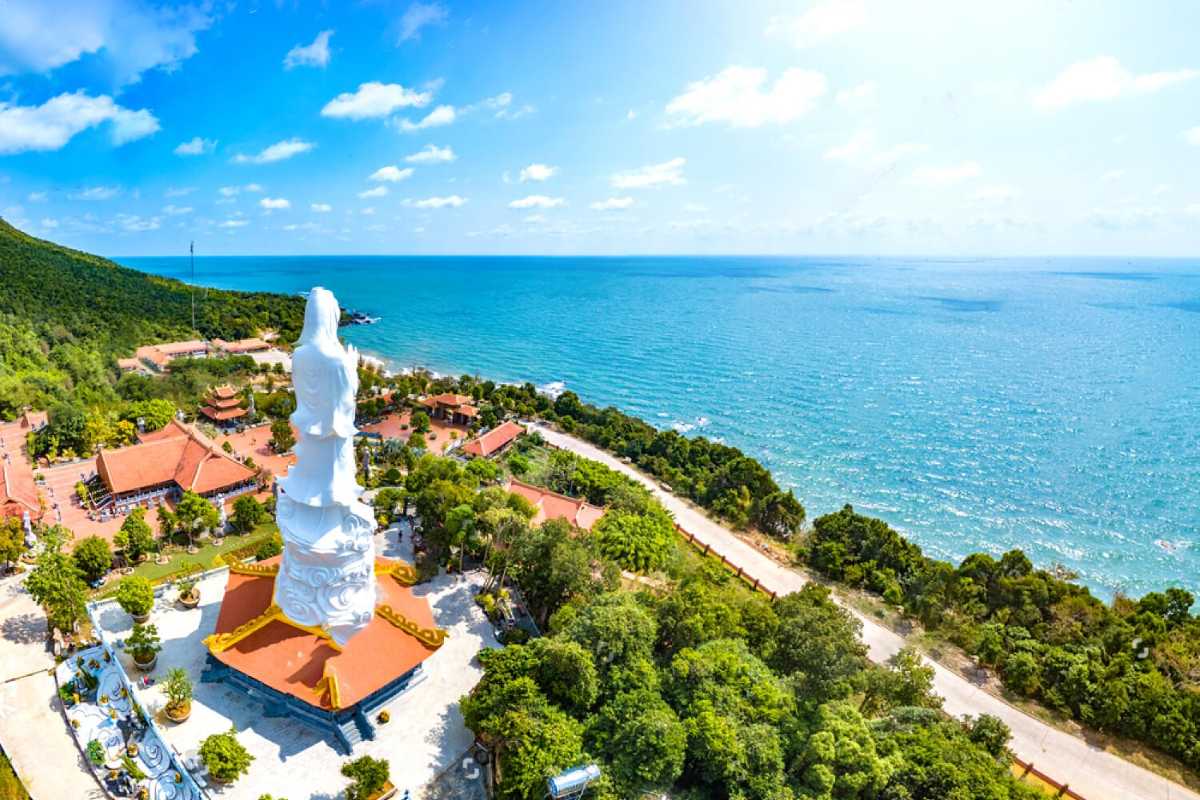
Architectural Influences and Design Features
The architecture of Ho Quoc Pagoda showcases traditional Vietnamese architecture blended with Buddhist artistic elements. Notable features include intricate stone carvings, elegant roof designs, and the impressive Guanyin statue that symbolizes compassion. The pagoda’s layout promotes spiritual reflection, while the artwork and statues illustrate profound religious symbolism unique to this region.
Visitors can explore these design elements and gain insight into the cultural artistry behind the pagoda.
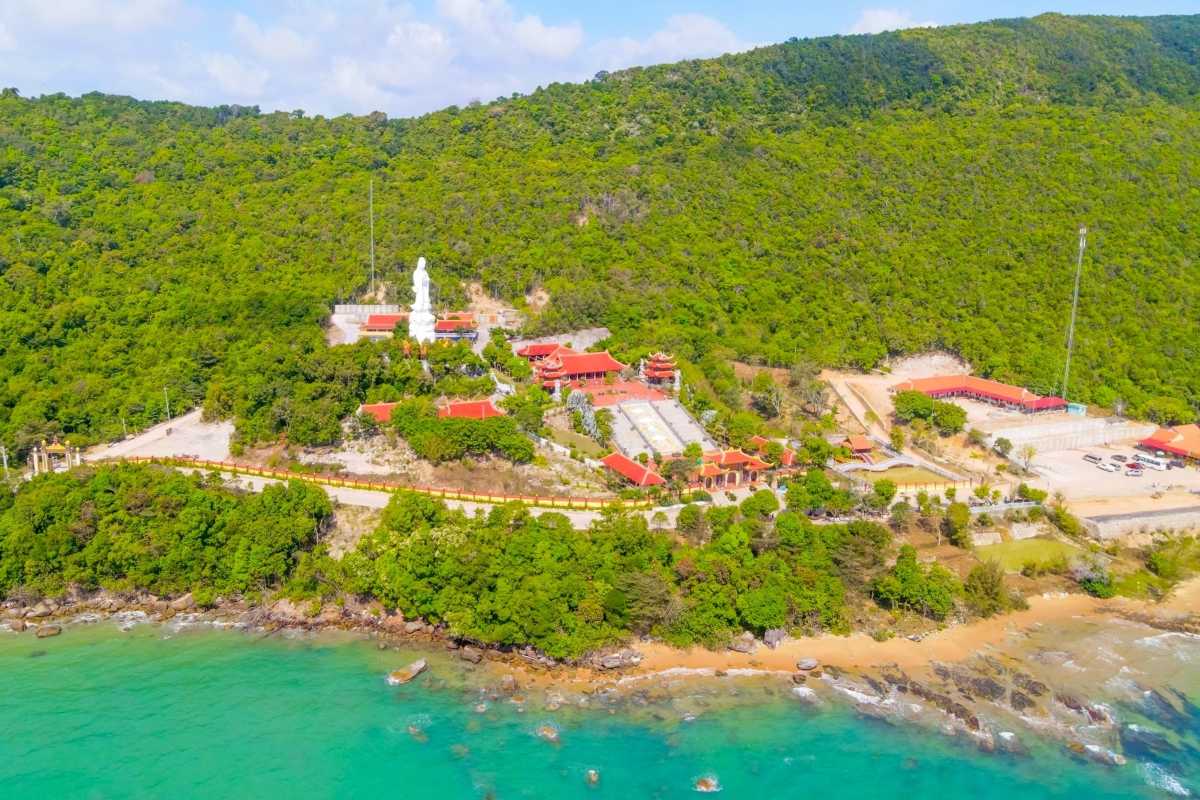
Religious and Cultural Importance Over Time
Over the years, Ho Quoc Pagoda has played a vital role in fostering Buddhist traditions and community worship on Phu Quoc. The site hosts numerous temple festivals and spiritual gatherings, reinforcing its status as a living heritage site. Its cultural importance continues to grow, serving as a place for religious ceremonies and social unity among locals and visitors alike.
Discover how the pagoda’s religious significance shapes local culture and community spirit.
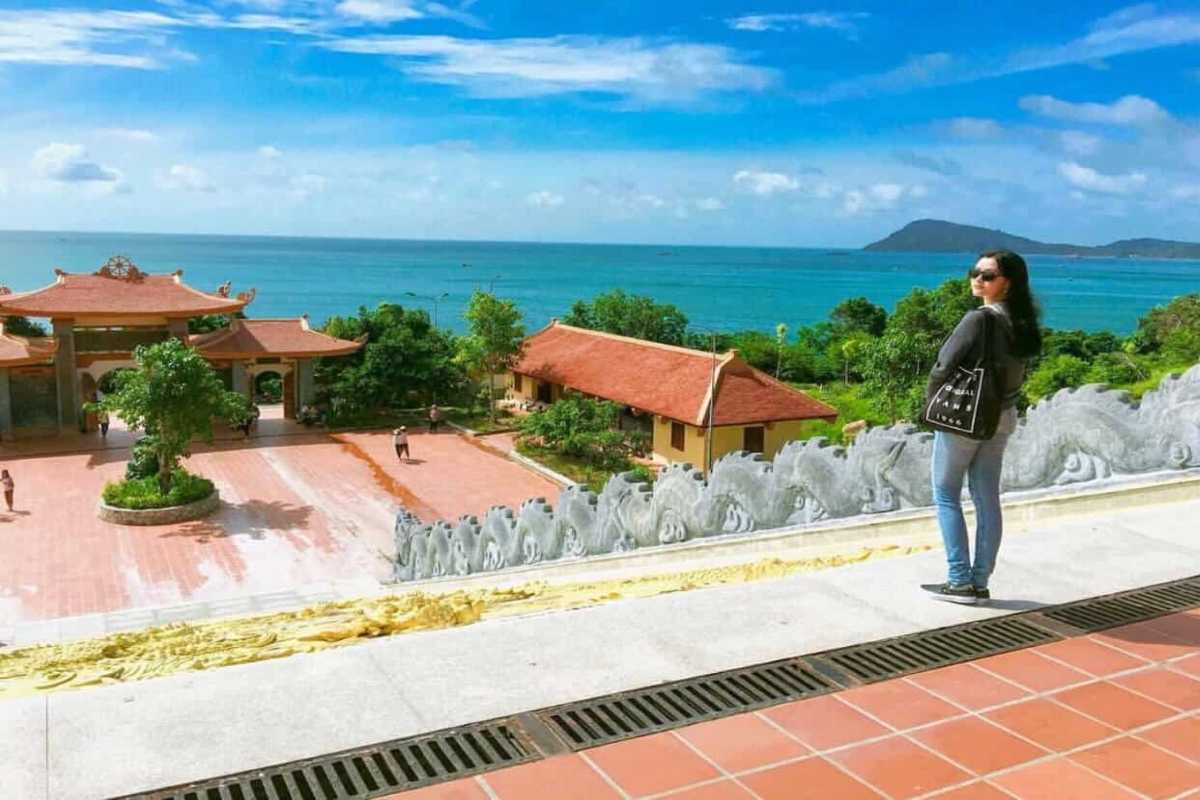
Cultural and Spiritual Aspects
Ho Quoc Pagoda plays a vital role in preserving Vietnamese Buddhism and serves as a significant Buddhist pilgrimage site on Phu Quoc. This spiritual landmark embodies centuries of religious heritage preservation and showcases the island’s deep-rooted Vietnamese spiritual traditions. Visitors can witness sacred statues and symbolism that highlight the cultural richness of the pagoda while experiencing meaningful pagoda ceremonies that reflect local faith and devotion.
Explore the rich cultural tapestry and spiritual depth of Ho Quoc Pagoda during your visit to Phu Quoc.
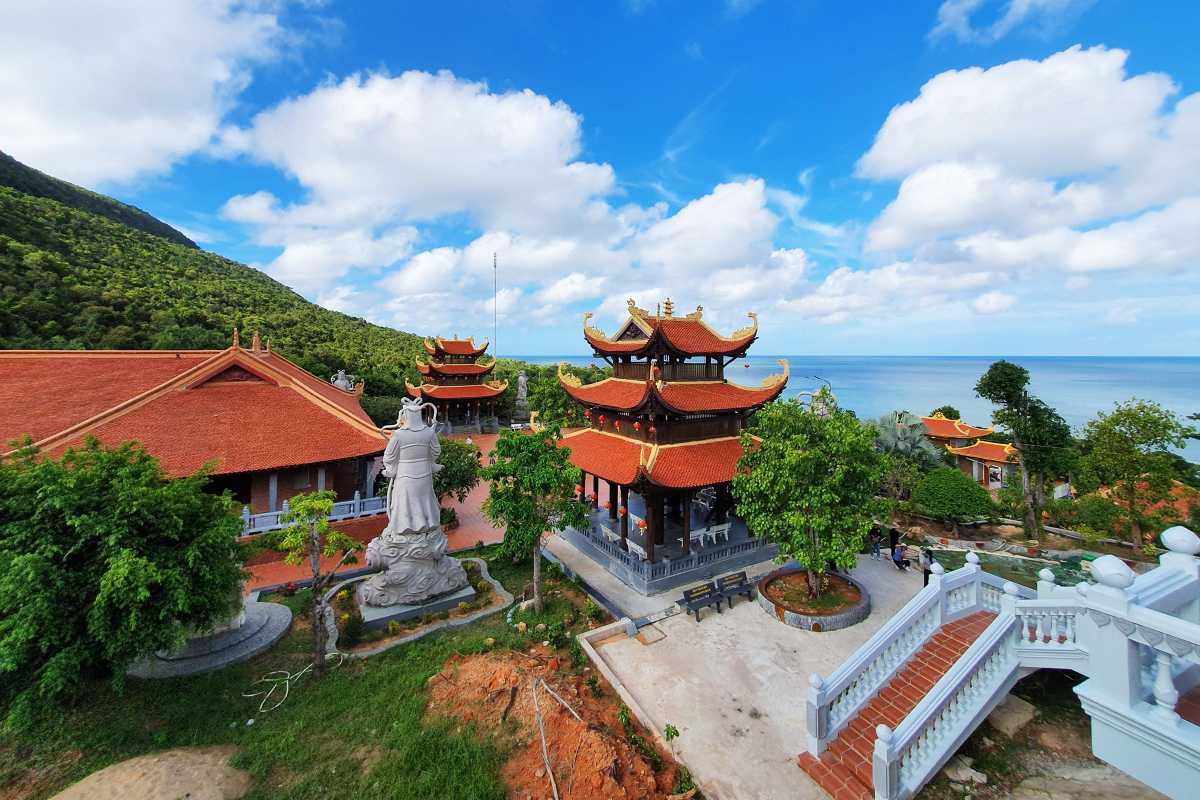
Buddhist Practices and Rituals at the Pagoda
Traditional Buddhist practices in Phu Quoc include meditation sessions, chanting, and various pagoda rituals led by the resident monks. The pagoda community welcomes both worshippers and travelers to participate respectfully in these spiritual activities. These ceremonies provide a glimpse into Buddhist worship and highlight the local monks ceremonies that sustain the island’s religious life.
Engage with the spiritual rhythms of Ho Quoc Pagoda by observing or joining the Buddhist rituals that shape its sacred atmosphere.
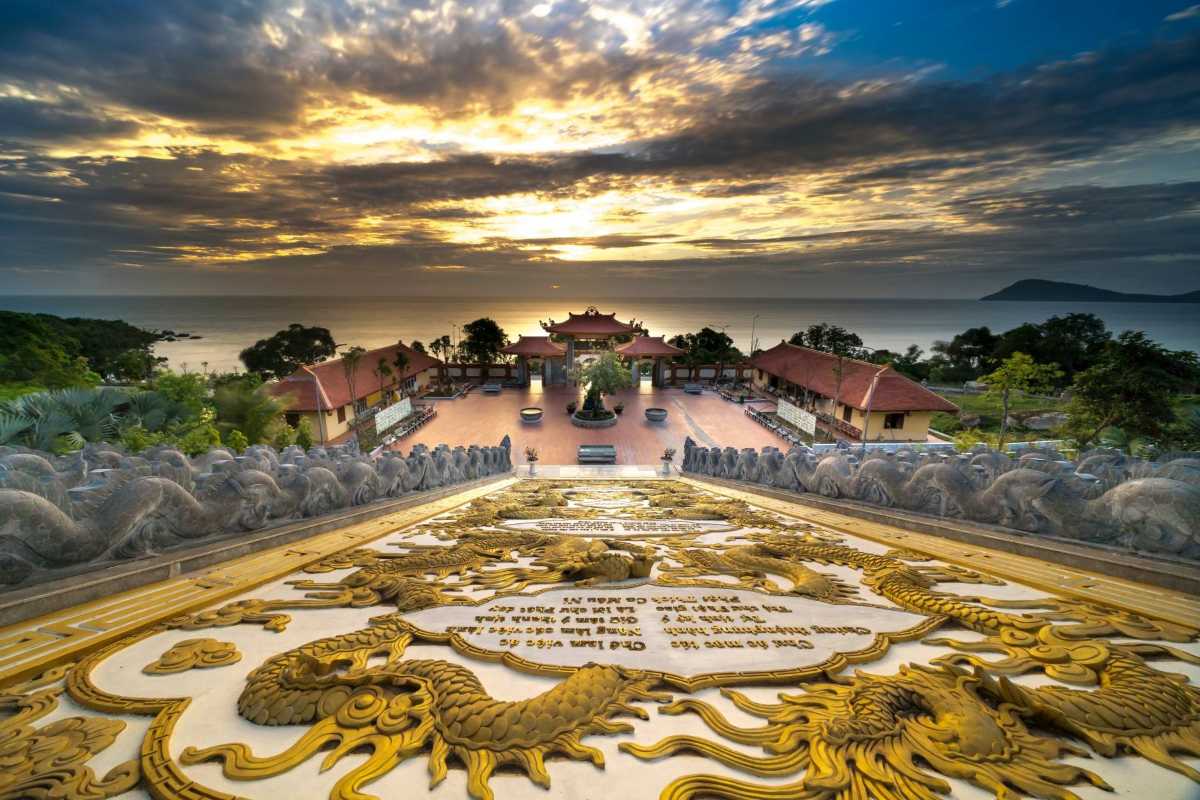
Key Religious Festivals and Events
Several important religious festivals in Phu Quoc are celebrated at Ho Quoc Pagoda, including the Vesak Day celebrations and Lunar New Year (Tet) activities. These festivals showcase traditional Buddhist festivals blended with vibrant cultural expressions unique to the region. Visitors can enjoy the lively atmosphere of these events, which contribute to the island’s reputation as a center for spiritual tourism in Vietnam.
Plan your visit to coincide with these festivals for an immersive cultural experience at Ho Quoc Pagoda.
Vesak Day Celebrations
Vesak Day marks the birth, enlightenment, and passing of Buddha, celebrated with solemn religious ceremonies and communal worship at Ho Quoc Pagoda. This festival attracts devotees and tourists who participate in prayers, offerings, and lantern lighting. The event emphasizes religious heritage preservation and strengthens the pagoda’s role as a prominent Buddhist pilgrimage site.
Witness the spiritual fervor of the Vesak festival in Vietnam at Ho Quoc Pagoda to deepen your cultural understanding.
Lunar New Year (Tet) Activities
Tet, the Vietnamese Lunar New Year, is a time of renewal and celebration marked by special rituals and family gatherings at Ho Quoc Pagoda. The festival features traditional prayers for luck and prosperity, alongside cultural performances and offerings. As a key Vietnamese cultural heritage site, the pagoda becomes a focal point for both spiritual reflection and festive joy during Tet.
Experience the warmth of Vietnamese cultural heritage by visiting Ho Quoc Pagoda during Lunar New Year celebrations.
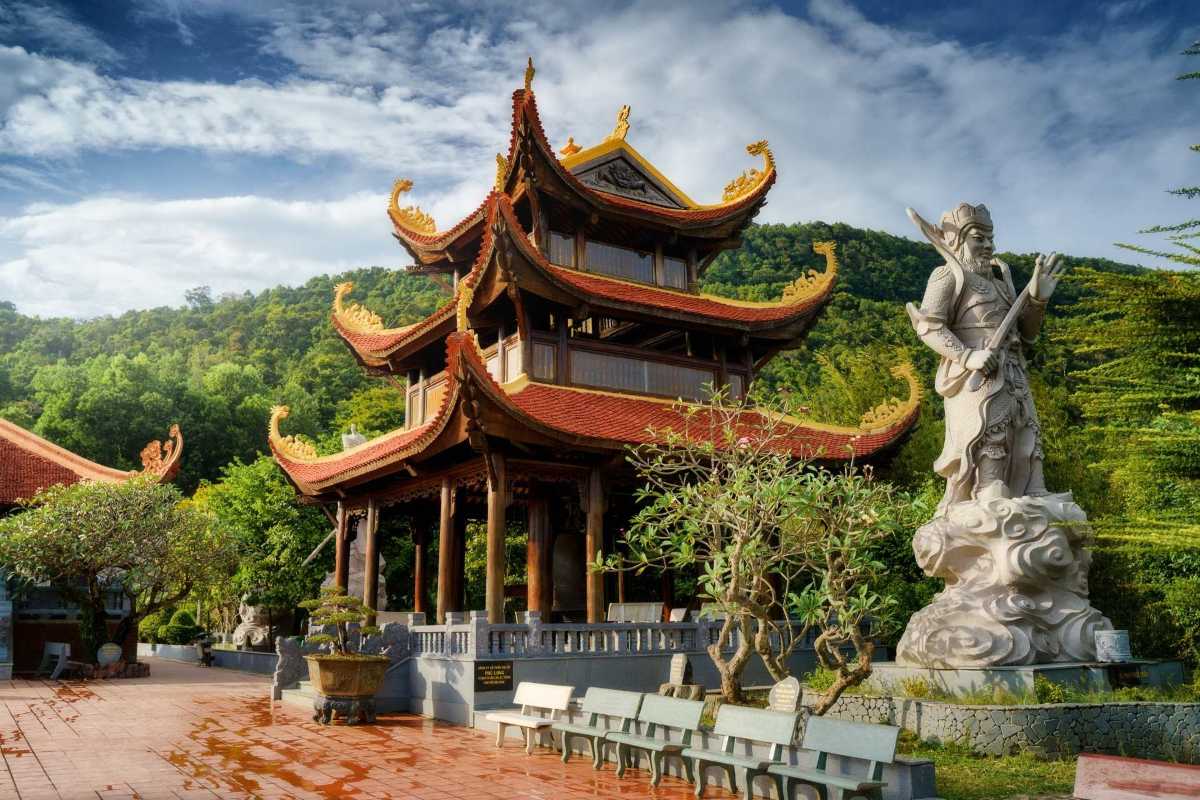
Symbolism of Statues and Artwork
The statues and artwork at Ho Quoc Pagoda are rich in Buddhist iconography and spiritual symbolism, reflecting deep religious meanings. Key sculptures, carvings, and architectural details illustrate important aspects of faith and culture, serving as educational tools for visitors. These sacred statues play a vital role in religious heritage preservation and highlight traditional Buddhist temple architecture. Understanding their symbolism enhances appreciation of the pagoda’s cultural significance.
Explore the profound meanings behind the pagoda’s artwork and sacred statues to deepen your connection with Ho Quoc Pagoda.
The Guanyin Statue and Its Meaning
The Guanyin statue at Ho Quoc Pagoda is a revered symbol in Vietnamese Buddhism, embodying compassion and mercy. This iconic figure guides worshippers toward spiritual enlightenment and serves as a beacon of hope. Its serene presence invites reflection and reverence, making it a central element of the pagoda’s sacred environment. Understanding the Guanyin statue’s spiritual significance enriches the visitor experience.
Witness the inspiring symbolism of the Guanyin statue and its role in Vietnamese spiritual traditions during your visit.
Semantic Keywords: Guanyin statue, Vietnamese Buddhism, sacred statues and symbolism
Stone Carvings and Other Iconography
The stone carvings at Ho Quoc Pagoda depict various Buddhist iconography and spiritual themes, offering insight into religious stories and teachings. These detailed artworks include depictions of deities, mythological creatures, and symbolic motifs that emphasize protection, wisdom, and enlightenment. Visitors can observe these carvings throughout the pagoda, appreciating their craftsmanship and the cultural messages they convey.
Key features include:
- Lotus motifs: Symbolizing purity and spiritual awakening
- Dragons: Representing power and protection
- Bodhisattva figures: Illustrating compassion and guidance
- Sacred inscriptions: Preserving ancient teachings and blessings
These artistic elements collectively enrich the spiritual atmosphere of Ho Quoc Pagoda and connect visitors to centuries of religious tradition.
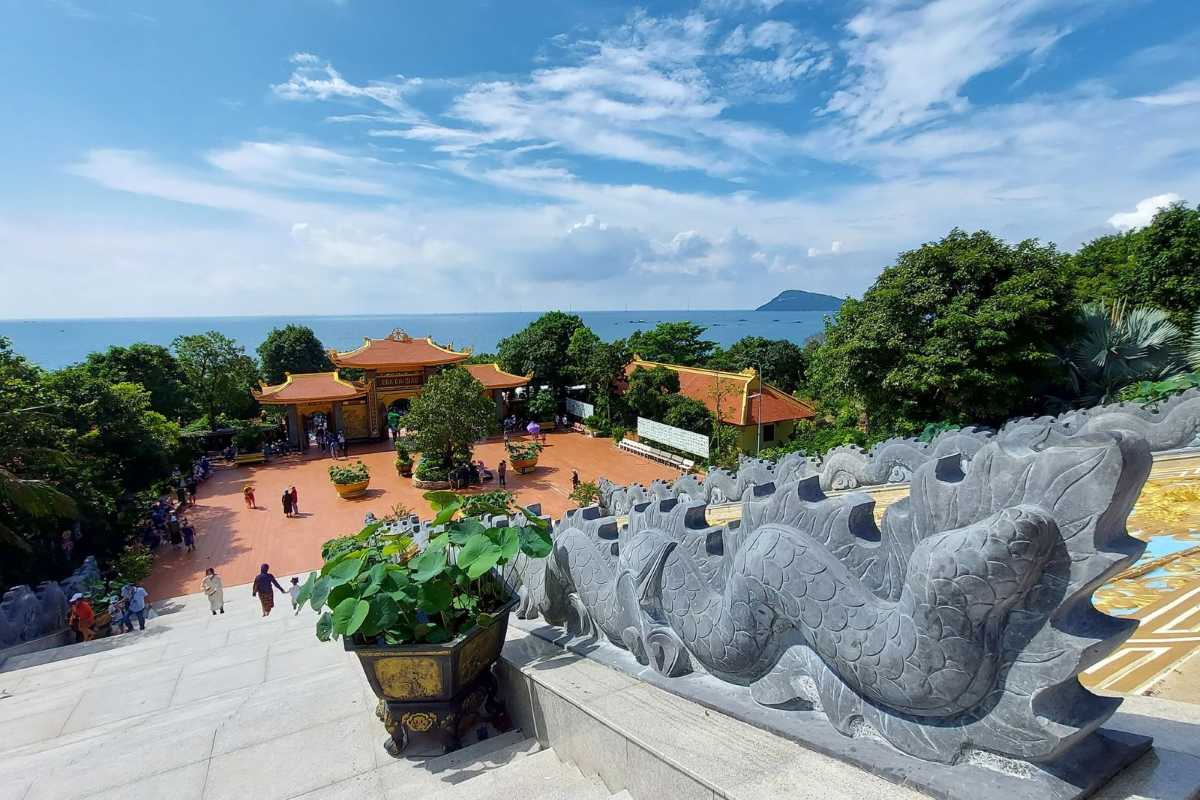
Visiting Ho Quoc Pagoda
Planning your trip to Ho Quoc Pagoda is essential for a smooth and enjoyable experience. Understanding your transportation options, entry fees, and the best times to visit will help you make the most of your visit to this spiritual landmark on Phu Quoc. The pagoda is accessible through various transport methods, and visitor facilities ensure a comfortable stay.
Make sure to prepare well by learning how to reach Ho Quoc Pagoda and when to visit for optimal conditions.
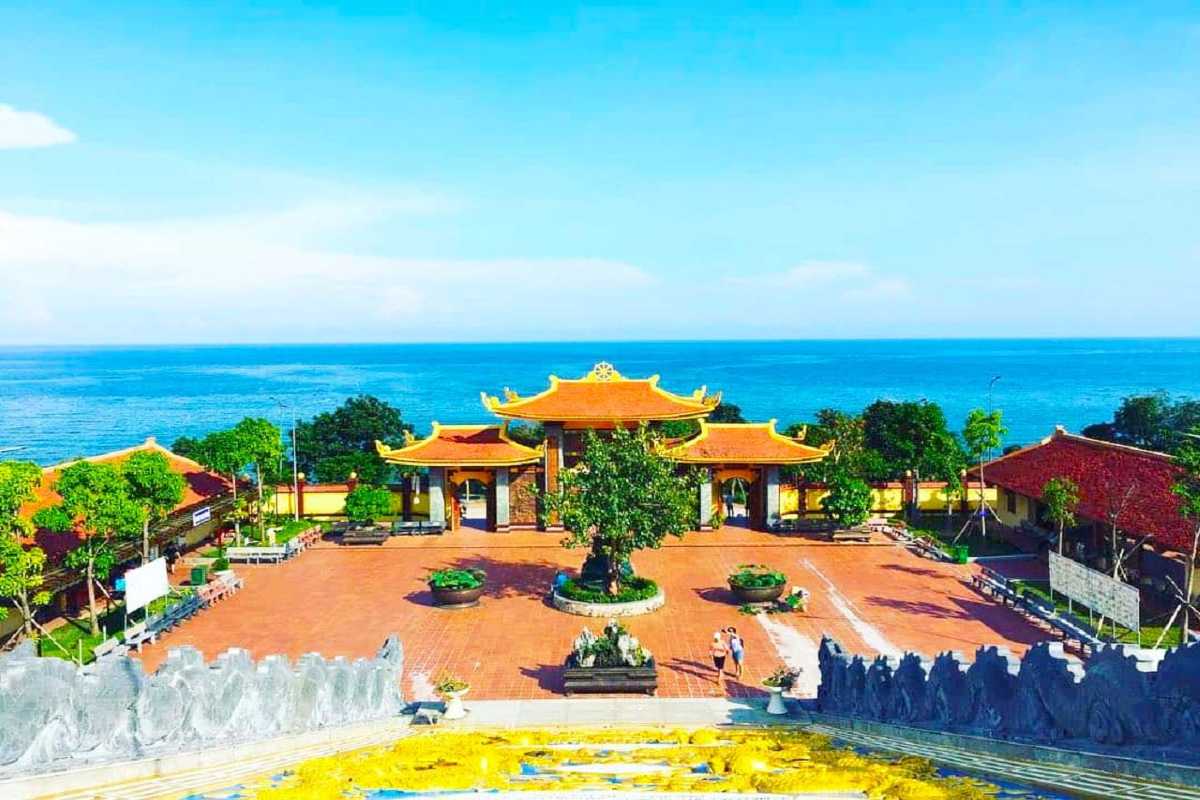
How to Get There
Reaching Ho Quoc Pagoda is straightforward, with several transport options available depending on your preferences and starting point. Knowing these options will help you plan your route efficiently and enjoy the journey to this important site.
You can choose from:
- Car rentals: Ideal for flexible travel schedules and comfort.
- Motorbike rentals: Popular among adventurous travelers seeking freedom to explore.
- Taxi services: Convenient for direct and hassle-free trips.
Most visitors travel from Phu Quoc International Airport or Phu Quoc Town, both located within accessible distance from the pagoda.
Prepare your transportation in advance to enjoy a stress-free visit to Ho Quoc Pagoda.
Transportation Options (Car, Motorbike, Taxi)
This section covers the common transport choices available to visitors:
- Car rental: Offers privacy, comfort, and the ability to visit other sites en route.
- Motorbike rental: Cost-effective and provides access to narrow roads, but requires confidence in riding.
- Taxi: Convenient and reliable but may be more expensive than rentals.
Each option has its advantages; consider your budget and comfort level when choosing your transport mode.
Nearest Airport and Town Proximity
The closest major airport is Phu Quoc International Airport, approximately 20 kilometers from Ho Quoc Pagoda. From there, the pagoda is reachable by car or taxi within about 30 minutes.
The nearest town, Phu Quoc Town, lies roughly 18 kilometers away and offers additional visitor services and accommodations.
Planning your arrival with these locations in mind ensures efficient travel and maximizes your time at the pagoda.
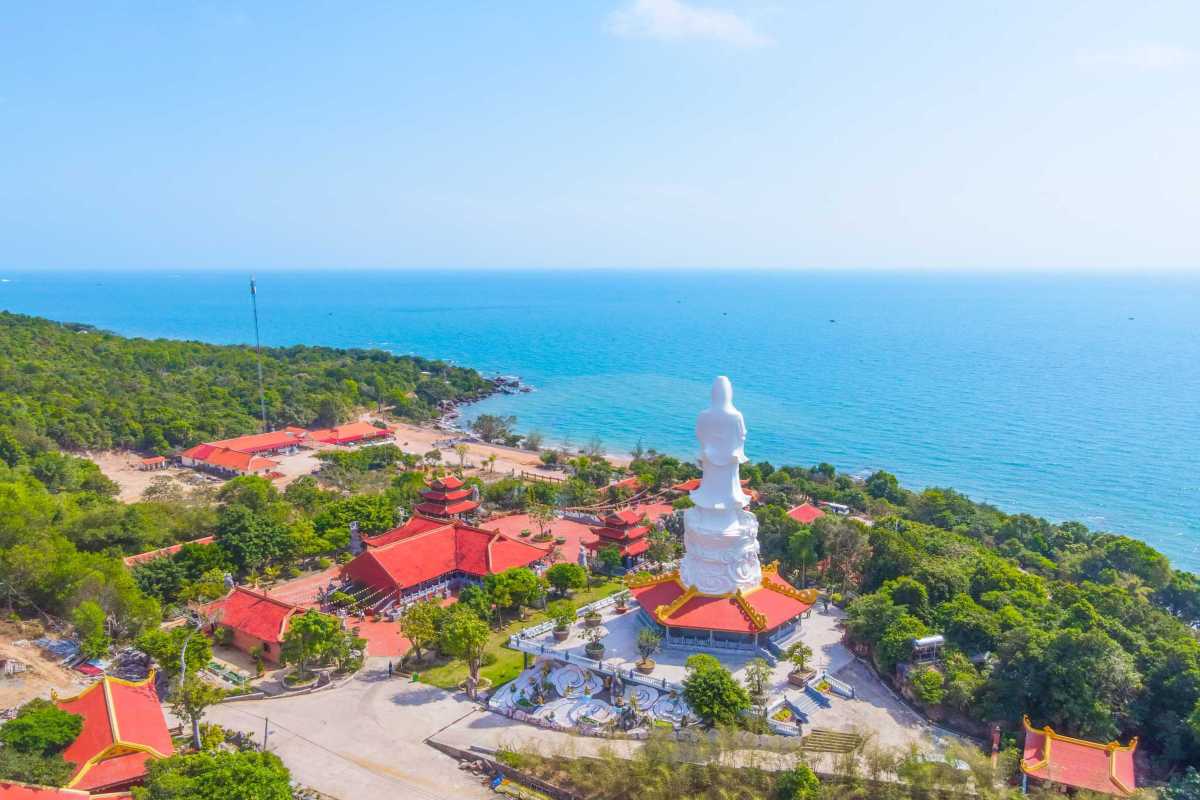
Entry Fees and Opening Hours
Visiting Ho Quoc Pagoda requires awareness of entry costs and operating times to plan your visit efficiently. The pagoda maintains a reasonable entry fee to support preservation efforts, and it is open daily to welcome visitors.
Key details include:
- Entry Fee: Modest charge to access the grounds, usually around a few thousand Vietnamese Dong.
- Opening Hours: Generally open from early morning (around 7:00 AM) until evening (around 6:00 PM).
- Special Hours: Some areas or ceremonies may have specific schedules.
Check updated fees and times before your visit to avoid surprises and make the most of your time at Ho Quoc Pagoda.

Best Times to Visit
To experience Ho Quoc Pagoda at its best, consider the seasonal climate and daily timing that enhance both comfort and photographic opportunities.
Ideal visiting times include:
- Dry season (November to April) for pleasant weather and clear skies.
- Early morning or late afternoon to enjoy cooler temperatures and softer natural light.
- Avoid peak tourist times to experience tranquility.
Planning your visit around these periods ensures a memorable and comfortable experience at the pagoda.
Seasonal Weather Considerations
Phu Quoc experiences a tropical climate with two main seasons:
- Dry Season: November to April, featuring sunny days and minimal rainfall. Ideal for outdoor activities and temple visits.
- Rainy Season: May to October, characterized by frequent showers and higher humidity. Be prepared for occasional interruptions.
Understanding this helps you choose the best season to visit Ho Quoc Pagoda and enjoy favorable conditions.
Optimal Times of Day for Photography and Exploration
For stunning photos and peaceful exploration at Ho Quoc Pagoda, aim for:
- Early morning hours shortly after opening when light is soft and crowds are minimal.
- Late afternoon before sunset for warm, golden-hour lighting enhancing the pagoda’s architecture.
- Avoid midday when harsh sunlight can cause shadows and discomfort.
These times provide the best balance of natural beauty and visitor comfort.
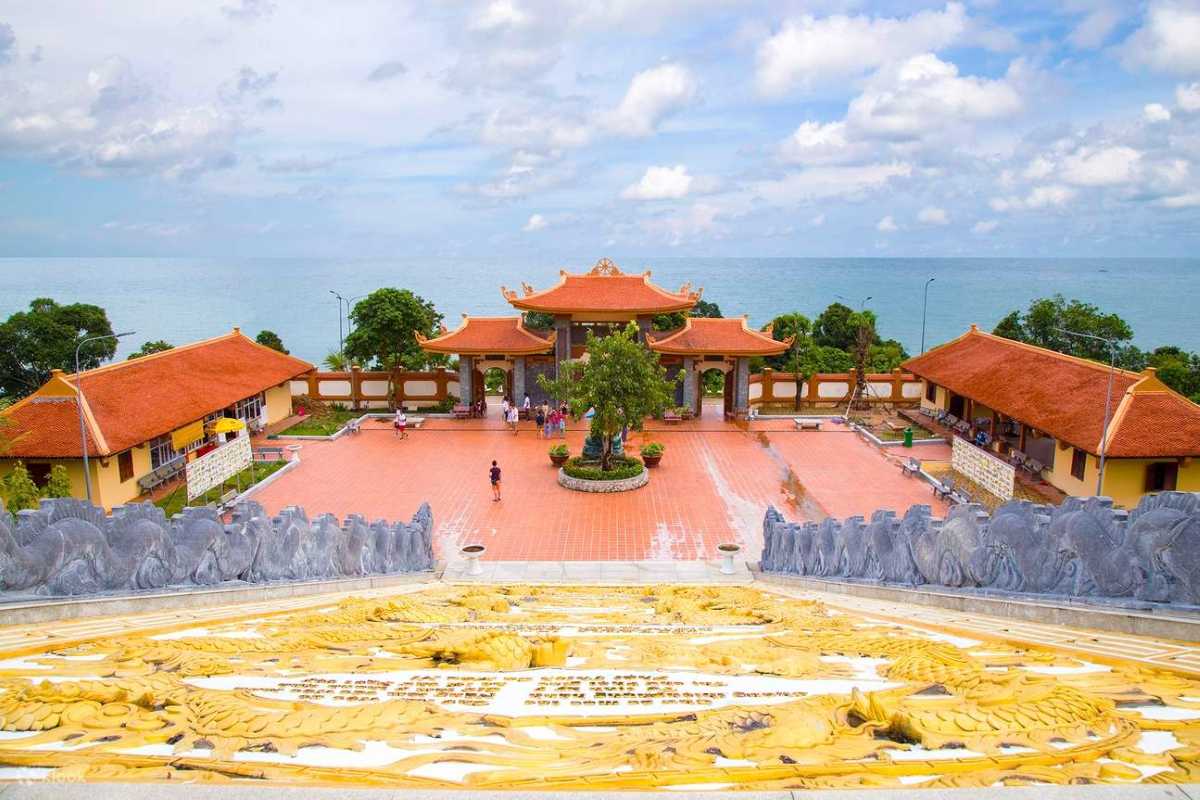
Accessibility and Visitor Facilities
Ho Quoc Pagoda offers several facilities and accessibility features to accommodate diverse visitors:
- Paved pathways and ramps facilitating wheelchair access to main areas.
- Rest areas and seating throughout the grounds for relaxation.
- Clean restroom facilities near the entrance.
- On-site parking for cars and motorbikes.
- Visitor information centers providing maps and assistance.
These amenities ensure a comfortable and inclusive visit for all travelers.
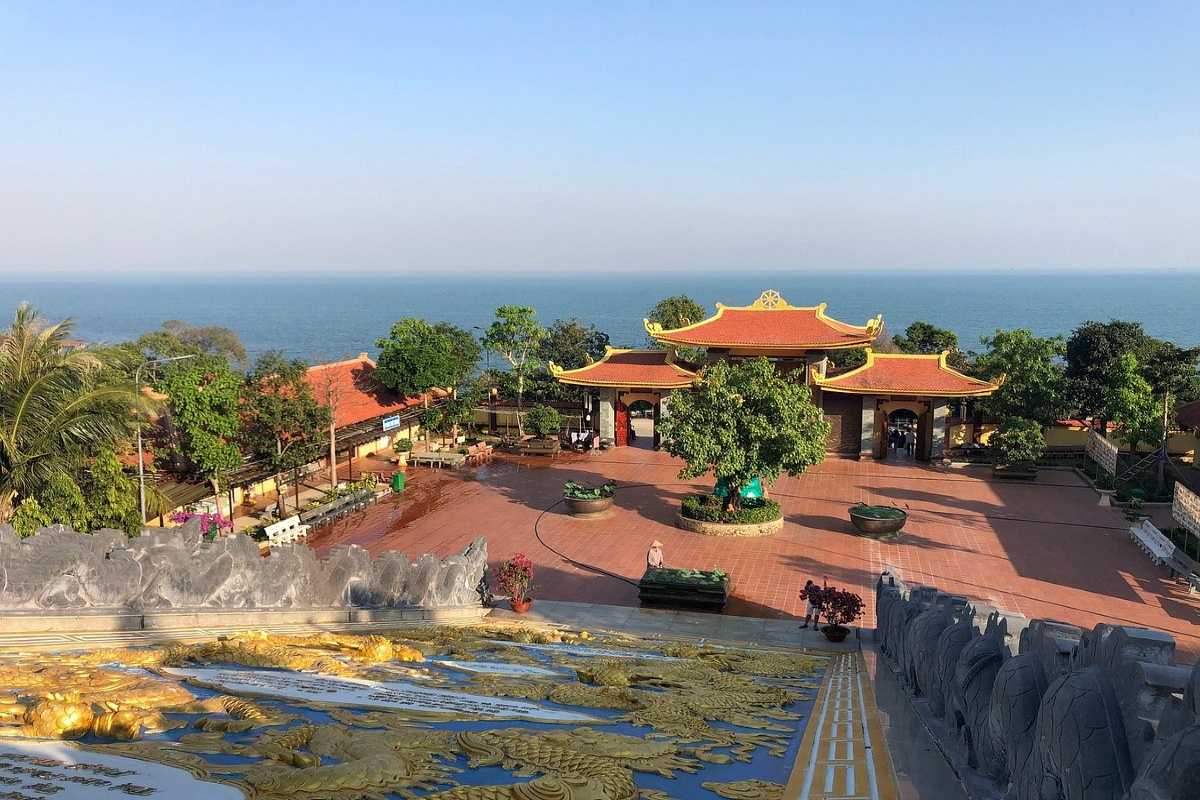
Things to Do at Ho Quoc Pagoda
Ho Quoc Pagoda offers a variety of activities that invite visitors to engage deeply with its spiritual and cultural environment. From exploring the beautiful grounds and architecture to participating in traditional rituals, there is much to experience beyond simply sightseeing. The pagoda also provides stunning viewpoints perfect for photography and offers guided tours that enrich your understanding of its history and religious significance.
Discover the many ways to enjoy and connect with Ho Quoc Pagoda on your visit to Phu Quoc.

Exploring the Pagoda Grounds and Architecture
Exploring the expansive grounds of Ho Quoc Pagoda reveals intricate architectural details and serene spaces designed for contemplation. Visitors can admire traditional pagoda architecture, including curved roofs, ornate carvings, and peaceful gardens that reflect Buddhist aesthetics and local craftsmanship. The temple grounds provide a quiet setting to appreciate both spiritual and artistic heritage.
Key highlights include:
- Traditional Vietnamese-style roofs with symbolic motifs
- Stone pathways leading to various shrines and meditation areas
- Decorative statues and carved reliefs that tell religious stories
- Well-maintained gardens enhancing the tranquil atmosphere
Experience the harmonious blend of nature and design through pagoda grounds exploration.
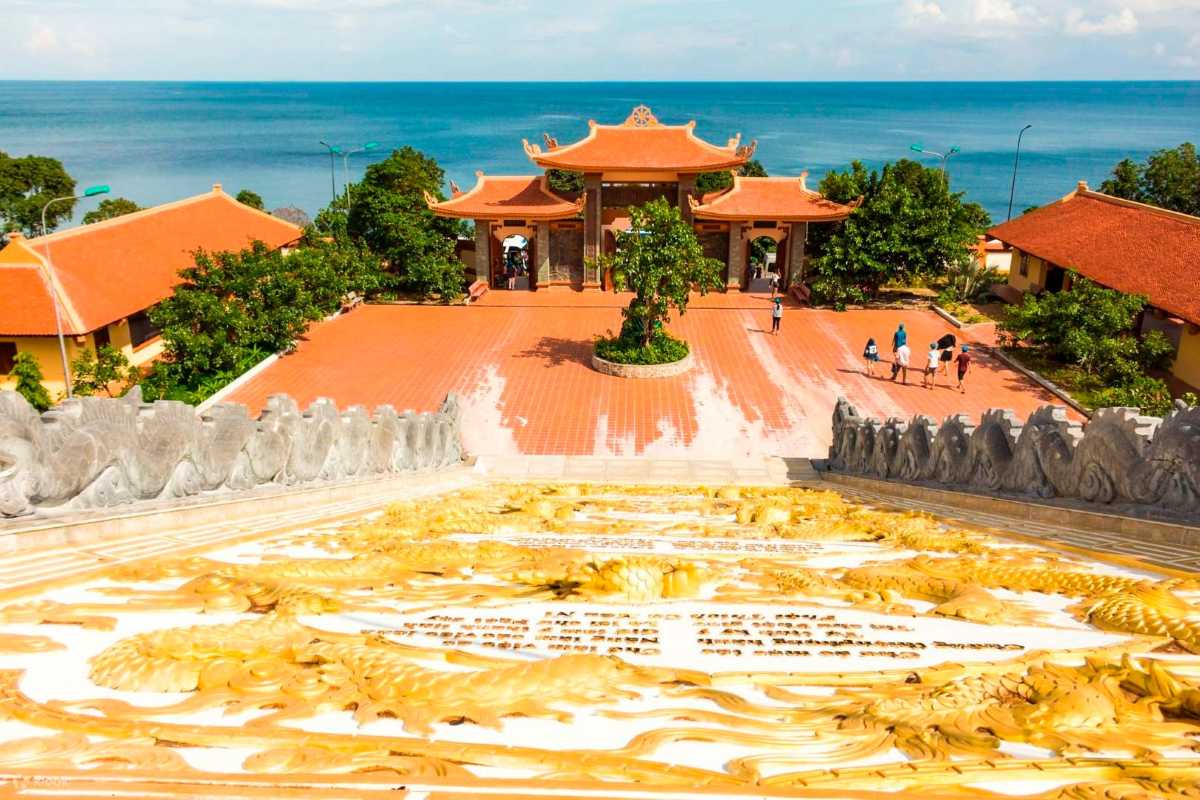
Participating in Spiritual and Cultural Activities
Visitors to Ho Quoc Pagoda have the opportunity to take part in meaningful spiritual activities in Phu Quoc, including meditation sessions, chanting ceremonies, and community prayers. These activities provide insight into Buddhist ceremonies and the local customs that keep traditions alive. Respectful participation offers a deeper connection to the pagoda’s spiritual life and fosters cultural understanding.
Typical activities include:
- Group meditation guided by resident monks
- Ritual offerings and incense lighting
- Participation in festival ceremonies during special occasions
- Observing daily prayer routines in the main hall
Engage respectfully in these cultural activities to enrich your visit.

Photography and Scenic Viewing Opportunities
The location of Ho Quoc Pagoda on a hillside offers breathtaking views ideal for photography enthusiasts. The pagoda’s architecture combined with panoramic vistas of the coastline creates perfect compositions. Early mornings and late afternoons provide the best natural light, while quieter times allow for peaceful exploration.
Tips for photographers:
- Capture the sunrise illuminating the Guanyin statue
- Use the coastal backdrop to frame temple rooftops
- Explore different angles around the garden and courtyard
- Visit during off-peak hours for uninterrupted shots
Maximize your photo experience with these scenic viewpoints in Phu Quoc.

Guided Tours and Educational Experiences
For those seeking in-depth knowledge, guided tours at Ho Quoc Pagoda offer informative narratives about its history, religious significance, and architectural features. Tours vary from short introductions to full-day cultural immersions including nearby sites. Educational sessions may include talks on Buddhist teachings and traditional practices.
Tour highlights include:
- Overview of pagoda history and symbolism
- Explanation of statues, artwork, and rituals
- Visits to meditation halls and prayer areas
- Optional inclusion of nearby cultural attractions
Booking a guided tour enhances your understanding and appreciation of Ho Quoc Pagoda’s heritage.

Surrounding Attractions and Activities
Visiting Ho Quoc Pagoda gives you a chance to explore many nearby natural, cultural, and coastal attractions that enrich your overall experience on Phu Quoc. From lush waterfalls and protected national parks to vibrant markets and pristine beaches, the surroundings offer a diverse range of activities for every traveler. These sites showcase the island’s ecological beauty and cultural richness, making them perfect complements to your pagoda visit.
Discover how to expand your itinerary with these exciting nearby destinations and activities around Ho Quoc Pagoda.

Nearby Natural Sites
The area around Ho Quoc Pagoda features stunning natural attractions that appeal to nature lovers and adventure seekers alike. Explore dense forests, waterfalls, and hiking trails within easy reach, supporting Phu Quoc ecotourism and wildlife preservation efforts.
Highlights include:
- Suoi Tranh Waterfall: A scenic waterfall with easy access and beautiful natural pools.
- Phu Quoc National Park: A protected area offering hiking, wildlife observation, and lush tropical landscapes.
Plan to spend time in these natural havens to experience the island’s biodiversity and outdoor charm.
Suoi Tranh Waterfall
Suoi Tranh Waterfall is a tranquil spot located near the pagoda, known for its cascading streams and peaceful forest setting. Visitors can enjoy walking trails, swimming in natural pools, and spotting local wildlife. The best times to visit are during the dry season when the water flow is gentle, creating perfect conditions for relaxation and photography.
Key features include:
- Easy trails suitable for families and casual hikers
- Natural swimming spots ideal for cooling off
- Rich tropical flora and fauna surrounding the falls
Include Suoi Tranh Waterfall in your itinerary for a refreshing nature experience near Ho Quoc Pagoda.
Phu Quoc National Park
Phu Quoc National Park covers a large area of protected forest with diverse wildlife and hiking opportunities. It provides visitors with a chance to connect with nature and learn about conservation efforts. Trails range from easy walks to more challenging treks, catering to all fitness levels.
Notable aspects include:
- Endangered species habitat and birdwatching spots
- Well-marked hiking trails through tropical rainforest
- Educational signage about the park’s ecosystem and preservation
Experience the natural beauty and ecological significance of Phu Quoc National Park when visiting the pagoda.

Local Markets and Cultural Spots
For cultural immersion, nearby markets and shrines offer authentic local experiences. Visitors can sample traditional foods, shop for handicrafts, and observe religious customs, enriching their understanding of Vietnamese cultural heritage.
Popular destinations include:
- Dinh Cau Night Market: A bustling evening market with street food, souvenirs, and vibrant local life.
- Dinh Cau Shrine: A historic religious site offering insight into local spirituality and architecture.
These spots complement your visit to Ho Quoc Pagoda with cultural flavor and social interaction.
Dinh Cau Night Market
The Dinh Cau Night Market is famous for its lively atmosphere, fresh seafood stalls, and local crafts. It is a great place to try authentic Vietnamese dishes, interact with vendors, and enjoy the island’s nightlife vibe.
Key highlights:
- Variety of street food including grilled seafood and tropical fruits
- Handcrafted souvenirs and local products
- Evening entertainment and friendly crowds
Plan to visit the market in the evening to capture the local spirit after a day at the pagoda.
Dinh Cau Shrine
Dinh Cau Shrine is a significant cultural and religious site near the market. The shrine honors local fishing traditions and spiritual guardians, featuring traditional Vietnamese architecture and serene surroundings.
Highlights include:
- Ornate altar and historical statues
- Cultural ceremonies and prayer rituals
- Scenic views of the coastline nearby
Visiting the shrine offers deeper insight into the spiritual fabric of Phu Quoc.

Beaches and Coastal Excursions
Relaxation and adventure await at the beautiful beaches close to Ho Quoc Pagoda. These sandy shores provide opportunities for swimming, sunbathing, and exploring marine life.
Recommended beaches include:
- Sao Beach: Known for its powdery white sand and clear turquoise waters.
- Long Beach: Popular for its length, amenities, and sunset views.
Both beaches offer a chance to unwind and enjoy the tropical island atmosphere.
Sao Beach
Sao Beach is widely regarded as one of the most beautiful beaches on Phu Quoc, attracting visitors with its pristine sands and calm waters. The beach provides ideal conditions for swimming and snorkeling.
Key features:
- Soft white sand perfect for sunbathing
- Gentle waves suitable for families and swimmers
- Nearby eateries serving fresh seafood
Include Sao Beach for a picture-perfect coastal escape during your visit.
Long Beach
Long Beach is a vibrant destination offering a mix of natural beauty and convenience. Its accessibility and facilities make it popular among tourists seeking comfort alongside scenic views.
Highlights include:
- Extensive shoreline ideal for walking and relaxation
- Beachfront resorts, cafes, and shops
- Spectacular sunsets over the Gulf of Thailand
Choose Long Beach for an easy-to-access, scenic beach experience near Ho Quoc Pagoda.

Practical Travel Tips
Preparing well for your visit to Ho Quoc Pagoda and Phu Quoc Island ensures a safe, respectful, and enjoyable experience. Understanding appropriate clothing, what to bring, and local customs will help you blend seamlessly with the culture and make the most of your trip. Being aware of health and safety considerations adds peace of mind during your travels.
Equip yourself with these practical tips to confidently explore Ho Quoc Pagoda and its surroundings.

Recommended Clothing and Behavior
When visiting Ho Quoc Pagoda, dress modestly and comfortably to respect the spiritual atmosphere. Lightweight, breathable clothing suited for tropical weather is ideal, but avoid revealing or flashy outfits. Shoes should be easy to remove as you will need to take them off before entering temple buildings.
Key recommendations:
- Wear clothing that covers shoulders and knees for cultural respect
- Choose comfortable footwear suitable for walking and removing easily
- Avoid loud colors or flashy accessories inside the pagoda grounds
- Maintain quiet and respectful behavior during ceremonies
Following these guidelines ensures a pleasant experience for you and those around you.

What to Bring for the Visit
Packing smartly can enhance your comfort and preparedness during your visit to Ho Quoc Pagoda. Essential items include sun protection, water, and respectful offerings if you plan to participate in rituals.
Suggested items to bring:
- Sunscreen and a hat to protect against tropical sun
- Bottled water to stay hydrated
- A scarf or shawl for added modesty when needed
- Small offerings such as incense or flowers if partaking in ceremonies
Being prepared with these essentials will help you enjoy your visit fully.

Combining Ho Quoc Pagoda with Other Island Activities
Maximize your time on Phu Quoc by pairing your visit to Ho Quoc Pagoda with nearby attractions and activities. The island offers a range of experiences from nature hikes to cultural tours and beach relaxation.
Popular options include:
- Exploring Suoi Tranh Waterfall and Phu Quoc National Park for nature lovers
- Visiting local markets like Dinh Cau Night Market for food and souvenirs
- Relaxing at Sao Beach or Long Beach for coastal leisure
Incorporate these into your itinerary to enjoy a diverse and enriching island adventure.

Safety and Health Considerations
Ensuring your safety and health during your visit to Ho Quoc Pagoda is crucial. Be aware of common travel risks and take precautions appropriate to the tropical environment.
Safety tips include:
- Drink plenty of water and avoid excessive sun exposure
- Use insect repellent to prevent mosquito bites
- Follow local guidelines and respect restricted areas
- Keep personal belongings secure and stay aware of surroundings
Taking these steps will help you enjoy a worry-free visit.

Local Customs and Etiquette
Respecting local customs is essential when visiting Ho Quoc Pagoda and Vietnam. Understanding cultural norms ensures positive interactions and honors the community’s traditions.
Important etiquette includes:
- Bowing slightly when entering temple buildings
- Speaking softly and avoiding disruptive behavior
- Removing shoes before entering sacred spaces
- Avoiding physical contact with monks and religious artifacts
Observing these customs will enrich your cultural experience and show respect to local beliefs.

Conservation and Sustainability Efforts
Ho Quoc Pagoda is committed to protecting its natural environment and preserving its rich cultural heritage on Phu Quoc. Ongoing sustainability efforts ensure the site remains a beacon of responsible tourism, promoting awareness among visitors and locals alike. These initiatives help safeguard biodiversity and maintain the spiritual and ecological balance of the area.
Learn about the important conservation measures and community efforts supporting Ho Quoc Pagoda and how you can contribute to sustainable travel practices.

Environmental Protection Around the Pagoda
Specific programs at Ho Quoc Pagoda focus on conserving the surrounding natural habitat and reducing ecological impact. These include waste management, reforestation projects, and strict guidelines to minimize visitor disturbance.
Key initiatives include:
- Implementation of eco-friendly waste disposal systems
- Preservation of native plant species through planting and maintenance
- Controlled visitor access to sensitive areas to protect wildlife
- Promotion of clean energy and water conservation methods
These efforts help maintain the biodiversity and natural beauty around the pagoda, ensuring a healthy ecosystem for future generations.

Community Involvement in Preservation
Local communities play a vital role in protecting the cultural and environmental legacy of Ho Quoc Pagoda. Through education and active participation, residents help sustain traditional practices and support environmental stewardship.
Community contributions include:
- Organizing cultural festivals that raise awareness about heritage preservation
- Volunteer programs for environmental cleanups and tree planting
- Sharing knowledge of traditional spiritual customs with visitors
- Collaborating with authorities to enforce conservation policies
Their involvement ensures the pagoda remains a living part of Phu Quoc’s cultural fabric.

Sustainable Tourism Practices for Visitors
Visitors to Ho Quoc Pagoda are encouraged to adopt responsible behaviors that support sustainability goals and respect the sacred site. Small actions can have a significant impact on preserving the environment and cultural integrity.
Practical tips for sustainable tourism:
- Use reusable water bottles and avoid single-use plastics
- Respect designated paths and avoid disturbing flora and fauna
- Participate in cultural activities mindfully and respectfully
- Support local businesses and community-based tourism initiatives
By following these guidelines, you help protect Ho Quoc Pagoda while enjoying a meaningful travel experience.

Conclusion
Visiting Ho Quoc Pagoda is a must for anyone exploring Phu Quoc. This spiritual site combines rich history, beautiful architecture, and cultural depth, making it an essential part of your travel itinerary. Whether you seek peaceful reflection or cultural insight, the pagoda offers a meaningful experience that stays with you long after your visit.
Make sure to include Ho Quoc Pagoda in your plans to fully appreciate the heritage and spirituality of Phu Quoc.

Summary of Key Highlights
When visiting Ho Quoc Pagoda, several features stand out that make this destination truly special. Its architectural beauty, cultural significance, and natural surroundings combine to offer a rich and memorable experience. Here are the key highlights that define why the pagoda is a must-see on Phu Quoc Island.
- Ho Quoc Pagoda showcases stunning Buddhist architecture and sacred artwork.
- It serves as a vital spiritual and cultural landmark on Phu Quoc Island.
- Visitors can enjoy peaceful meditation, vibrant festivals, and panoramic coastal views.
- The pagoda is accessible via multiple transport options with reasonable entry fees.
- Nearby natural sites and markets complement the spiritual visit with diverse activities.
These highlights capture why Ho Quoc Pagoda is a top attraction for travelers to Vietnam.

Why Ho Quoc Pagoda Should Be on Your Phu Quoc Itinerary
Including Ho Quoc Pagoda in your Phu Quoc itinerary offers more than sightseeing; it is a journey into Vietnamese spiritual heritage. The pagoda’s tranquil environment invites reflection, while its festivals and rituals provide vibrant cultural experiences. Whether you are a history enthusiast, a spiritual seeker, or a cultural traveler, the pagoda enriches your island visit in unique ways.
Discover why so many travelers rank Ho Quoc Pagoda among the must-see attractions of Phu Quoc.

Final Visitor Recommendations
For a smooth and rewarding visit to Ho Quoc Pagoda, consider these practical tips:
- Dress modestly and respectfully, covering shoulders and knees.
- Visit during the dry season for the best weather and lighting.
- Participate mindfully in spiritual activities to honor local customs.
- Combine your visit with nearby attractions like waterfalls and markets.
- Use reliable transport options and check updated opening hours.
Following these recommendations will enhance your experience and help you connect meaningfully with the pagoda and its community.
Mike Nguyen
Travel Advisor
Mobile: +84917506881 (whatsapp available)
Email: contact@asiatravellinks.com
Faqs
Ho Quoc Pagoda has a rich history that reflects decades of spiritual devotion and cultural heritage on Phu Quoc Island. It began construction in the early 20th century and evolved through several phases into the majestic temple complex seen today.
- Initial site selection and foundation laying emphasized spiritual and geographical harmony.
- Key building milestones included the main temple, prayer halls, and sacred statues.
- The pagoda has undergone renovations to preserve its architectural beauty and accommodate visitors.
- It serves as both a religious sanctuary and a cultural landmark on the island.
Understanding this history enhances appreciation for Ho Quoc Pagoda’s deep-rooted significance and its role in Phu Quoc’s spiritual landscape.
Plan your visit with an awareness of the pagoda’s historical journey to fully connect with its cultural richness.
Reaching Ho Quoc Pagoda from Phu Quoc International Airport is convenient and straightforward, making it accessible for travelers arriving by air.
- The pagoda lies about 20 kilometers southeast of the airport.
- Options include car rentals, taxi services, or motorbike rentals depending on your comfort and budget.
- The journey typically takes around 30 minutes via paved roads.
- There is no public bus service, so private transport is recommended.
- The route offers scenic coastal views along the way.
Preparing transportation in advance ensures a smooth start to your visit to Ho Quoc Pagoda.
Please let me know if you want me to continue with the rest of the FAQs in this exact style.
Ho Quoc Pagoda has a rich history that reflects decades of spiritual devotion and cultural heritage on Phu Quoc Island. It began construction in the early 20th century and evolved through several phases into the majestic temple complex seen today.
- Initial site selection and foundation laying emphasized spiritual and geographical harmony.
- Key building milestones included the main temple, prayer halls, and sacred statues.
- The pagoda has undergone renovations to preserve its architectural beauty and accommodate visitors.
- It serves as both a religious sanctuary and a cultural landmark on the island.
Understanding this history enhances appreciation for Ho Quoc Pagoda’s deep-rooted significance and its role in Phu Quoc’s spiritual landscape.
Plan your visit with an awareness of the pagoda’s historical journey to fully connect with its cultural richness.
Reaching Ho Quoc Pagoda from Phu Quoc International Airport is convenient and straightforward, making it accessible for travelers arriving by air.
- The pagoda lies about 20 kilometers southeast of the airport.
- Options include car rentals, taxi services, or motorbike rentals depending on your comfort and budget.
- The journey typically takes around 30 minutes via paved roads.
- There is no public bus service, so private transport is recommended.
- The route offers scenic coastal views along the way.
Preparing transportation in advance ensures a smooth start to your visit to Ho Quoc Pagoda.



